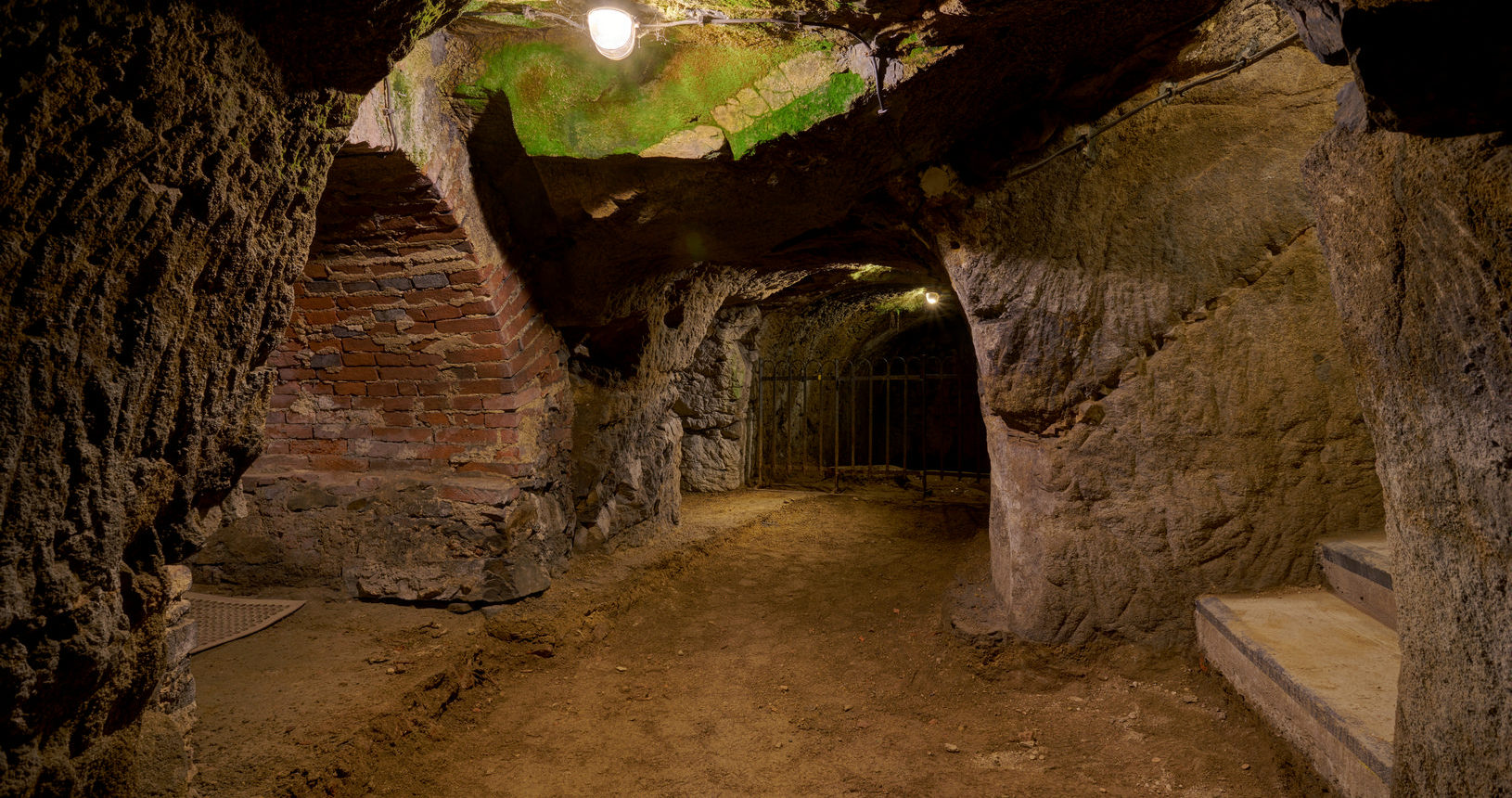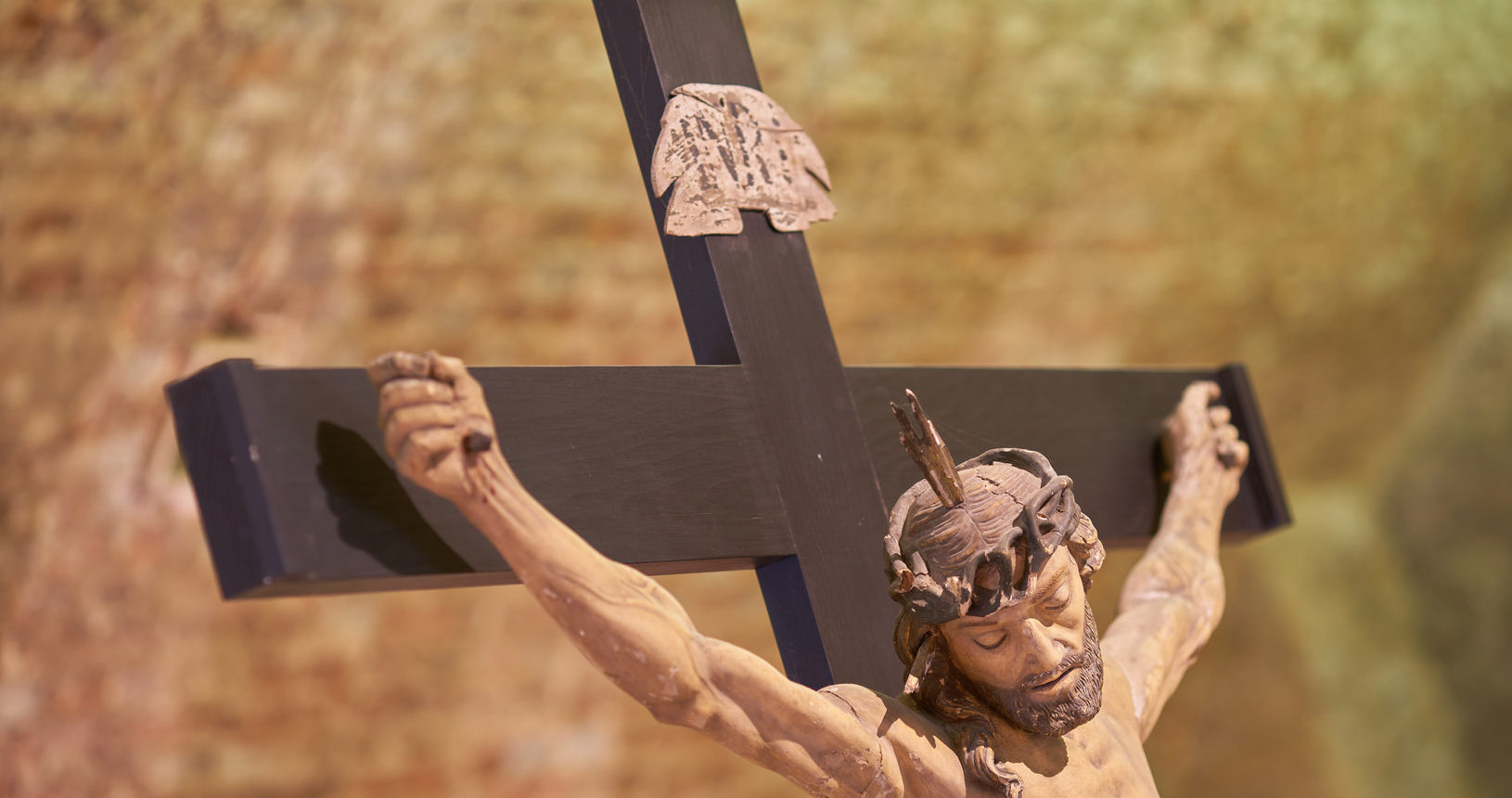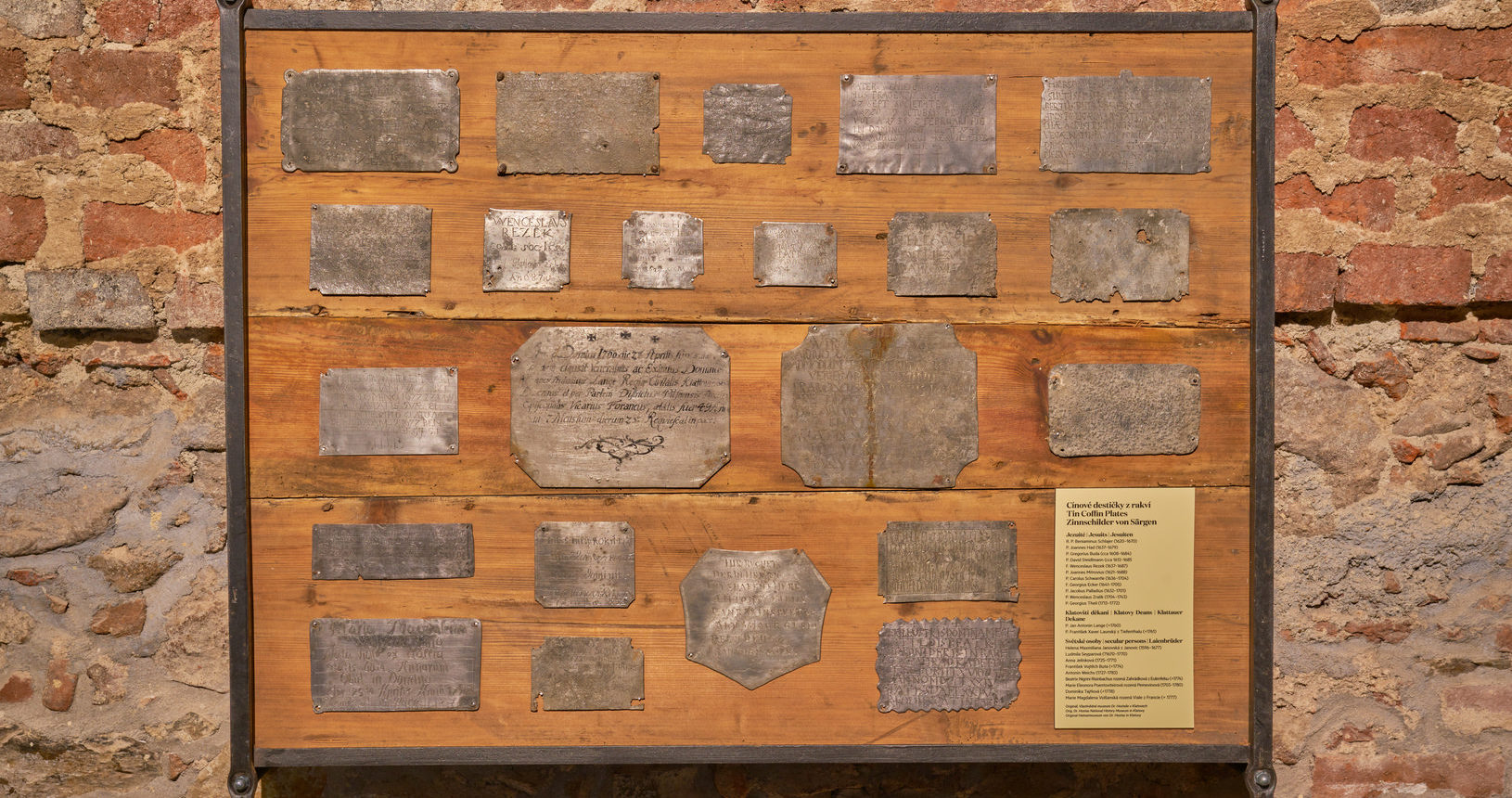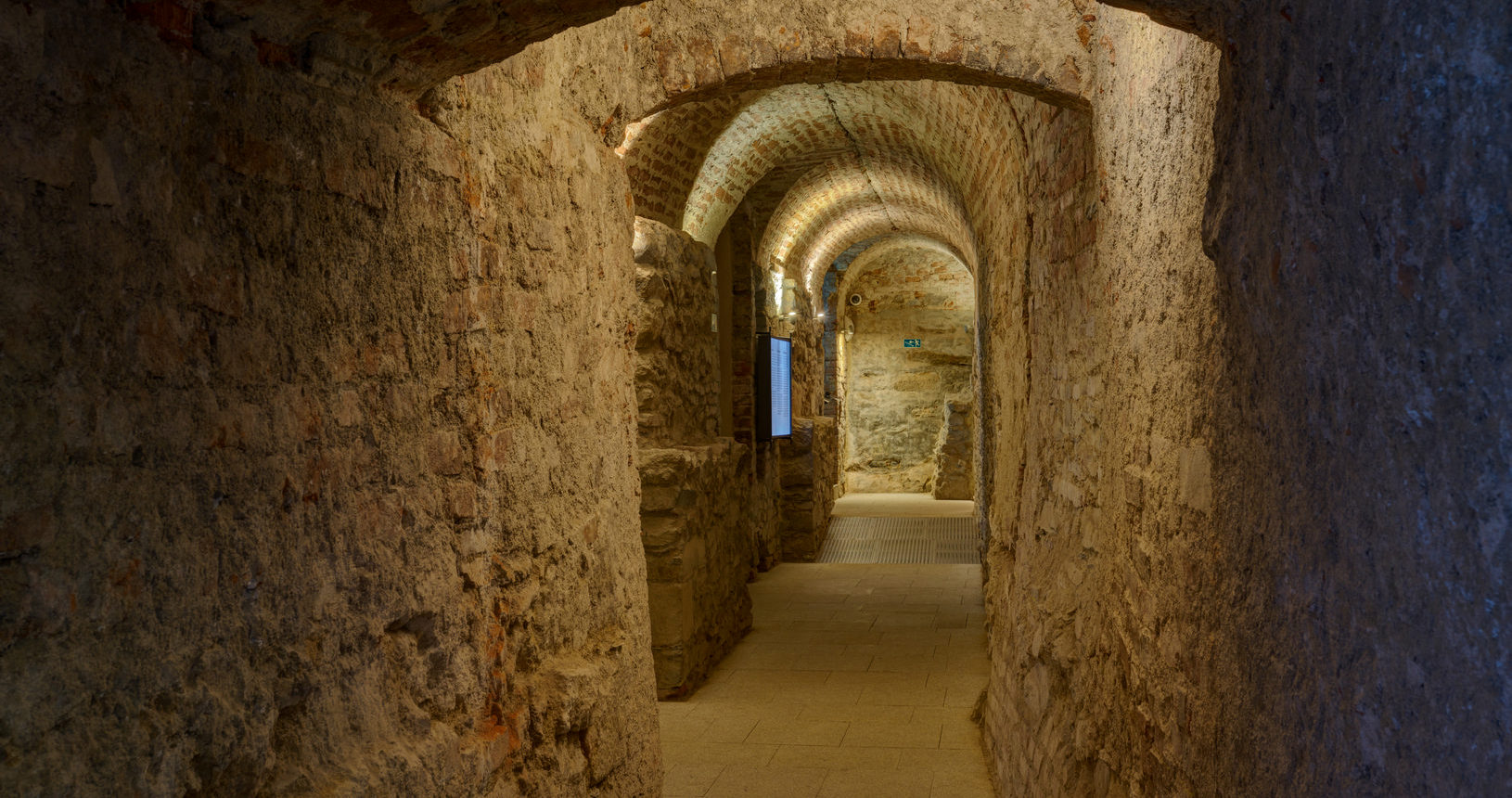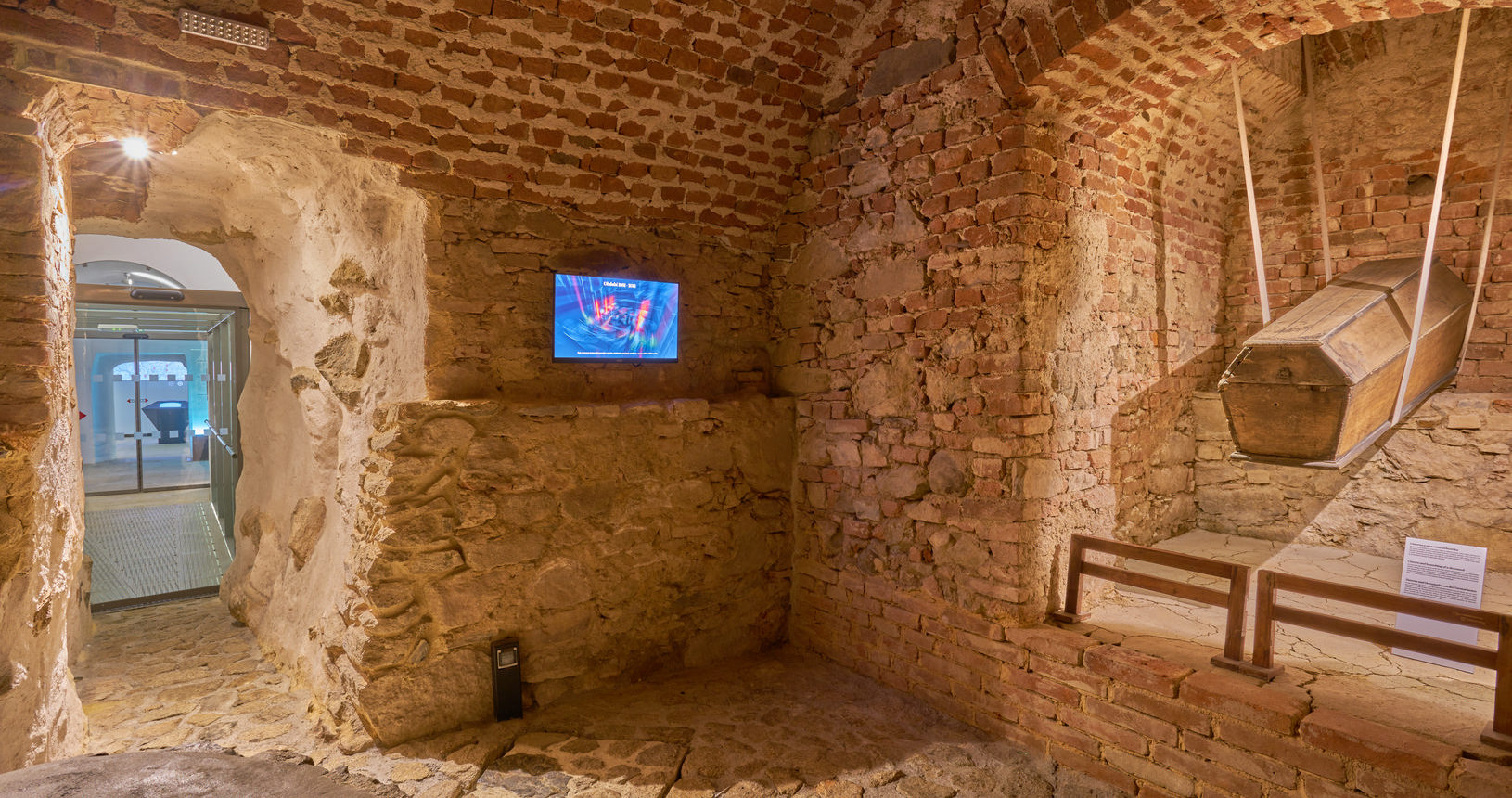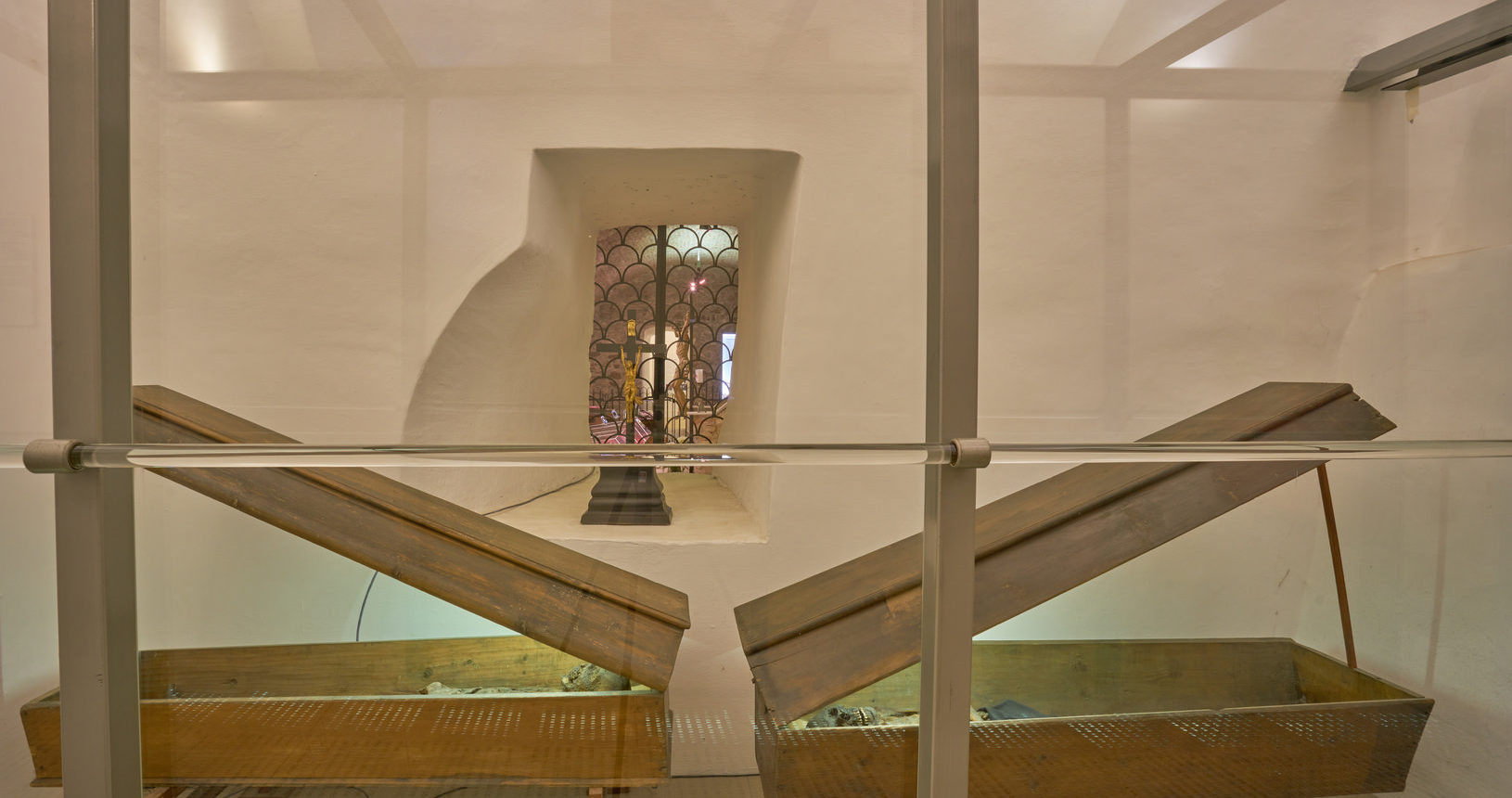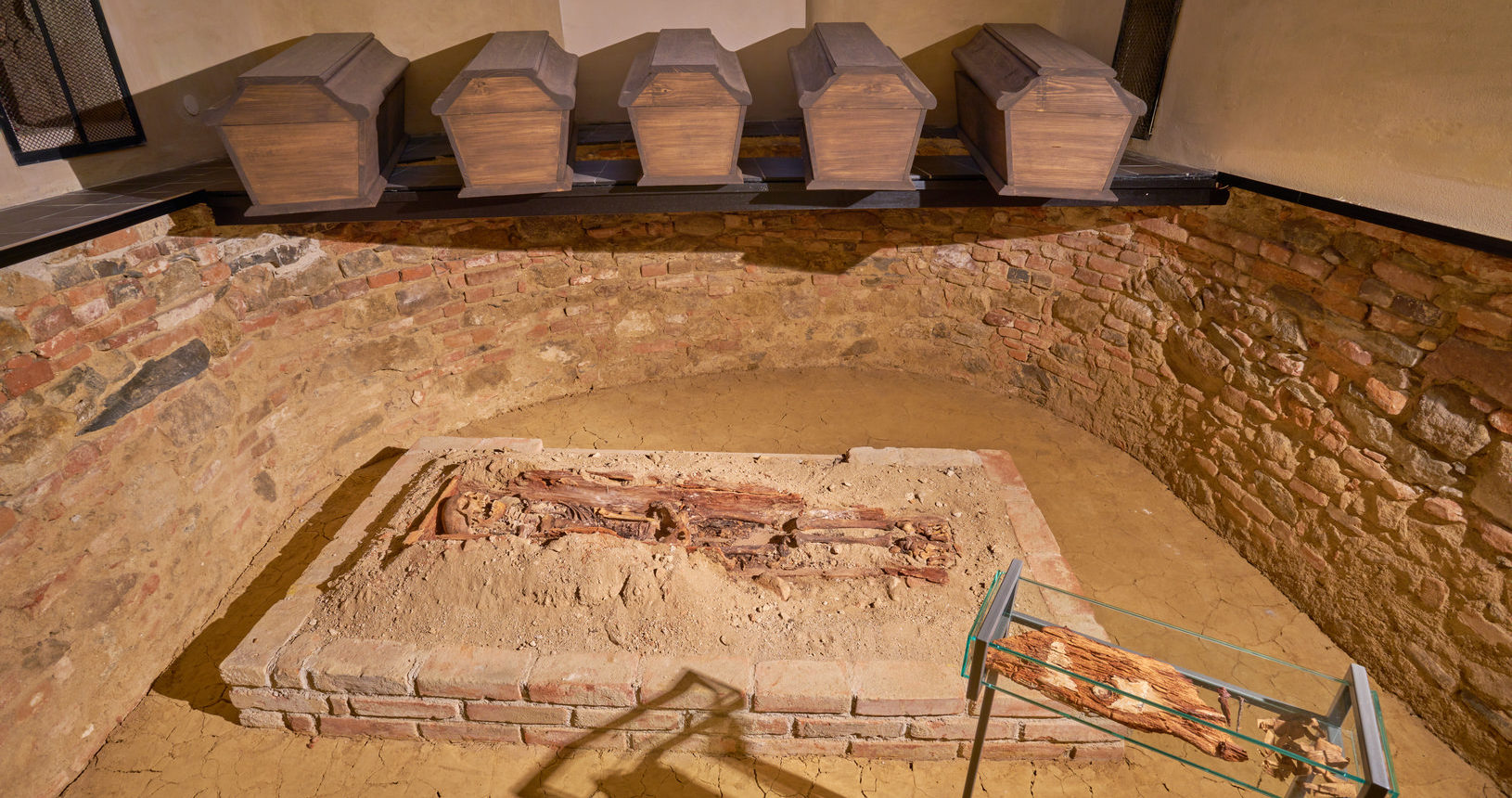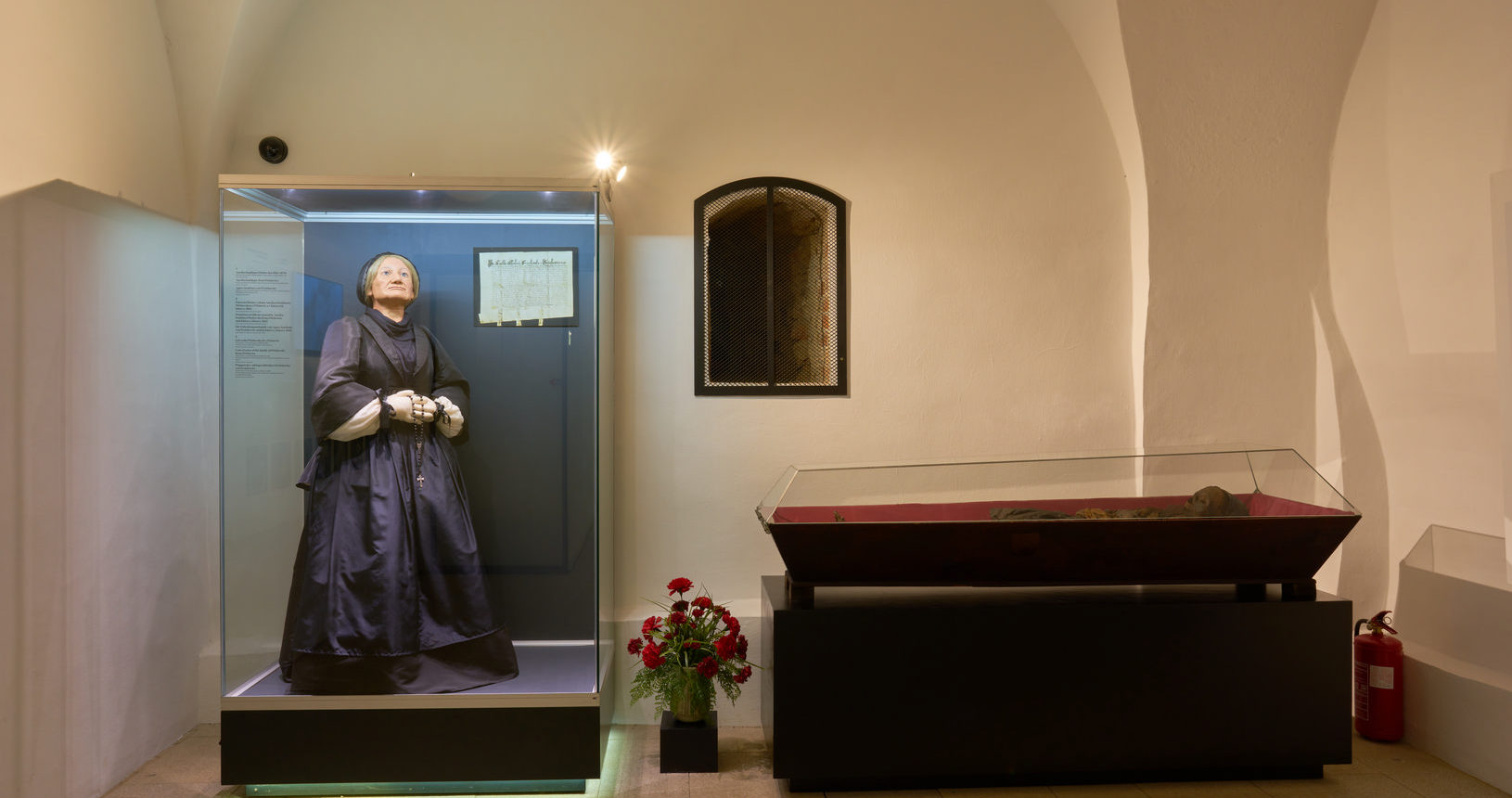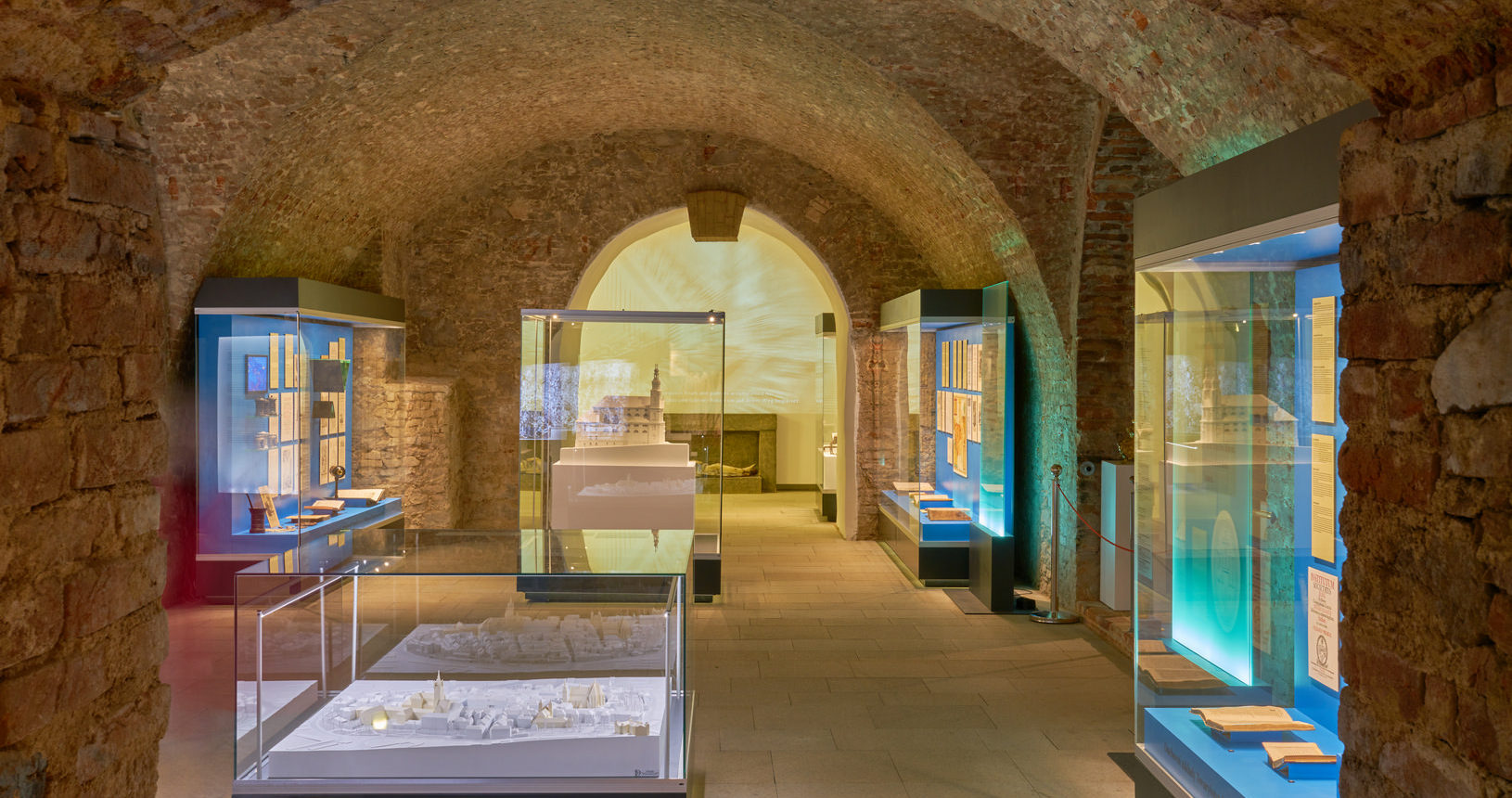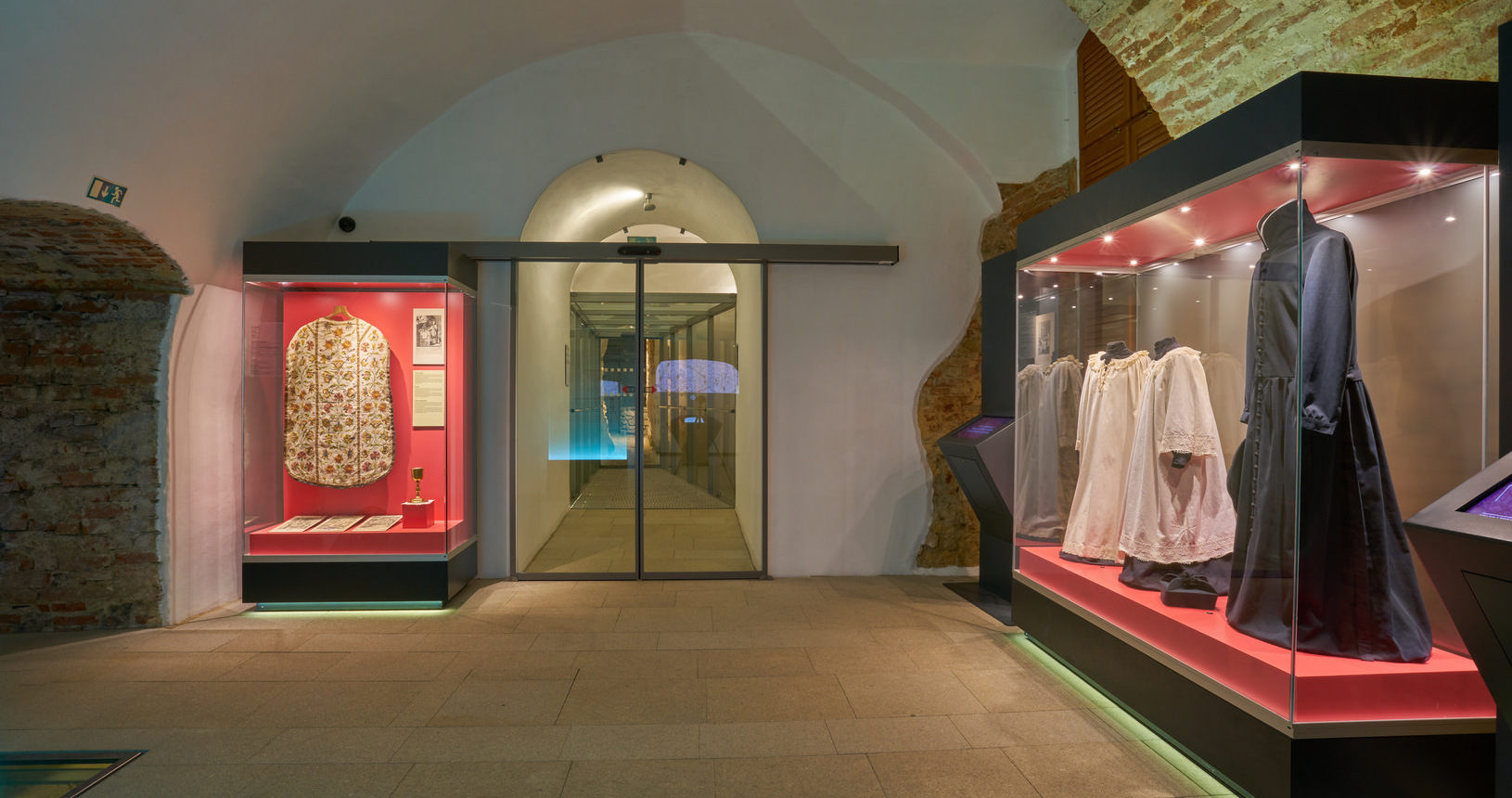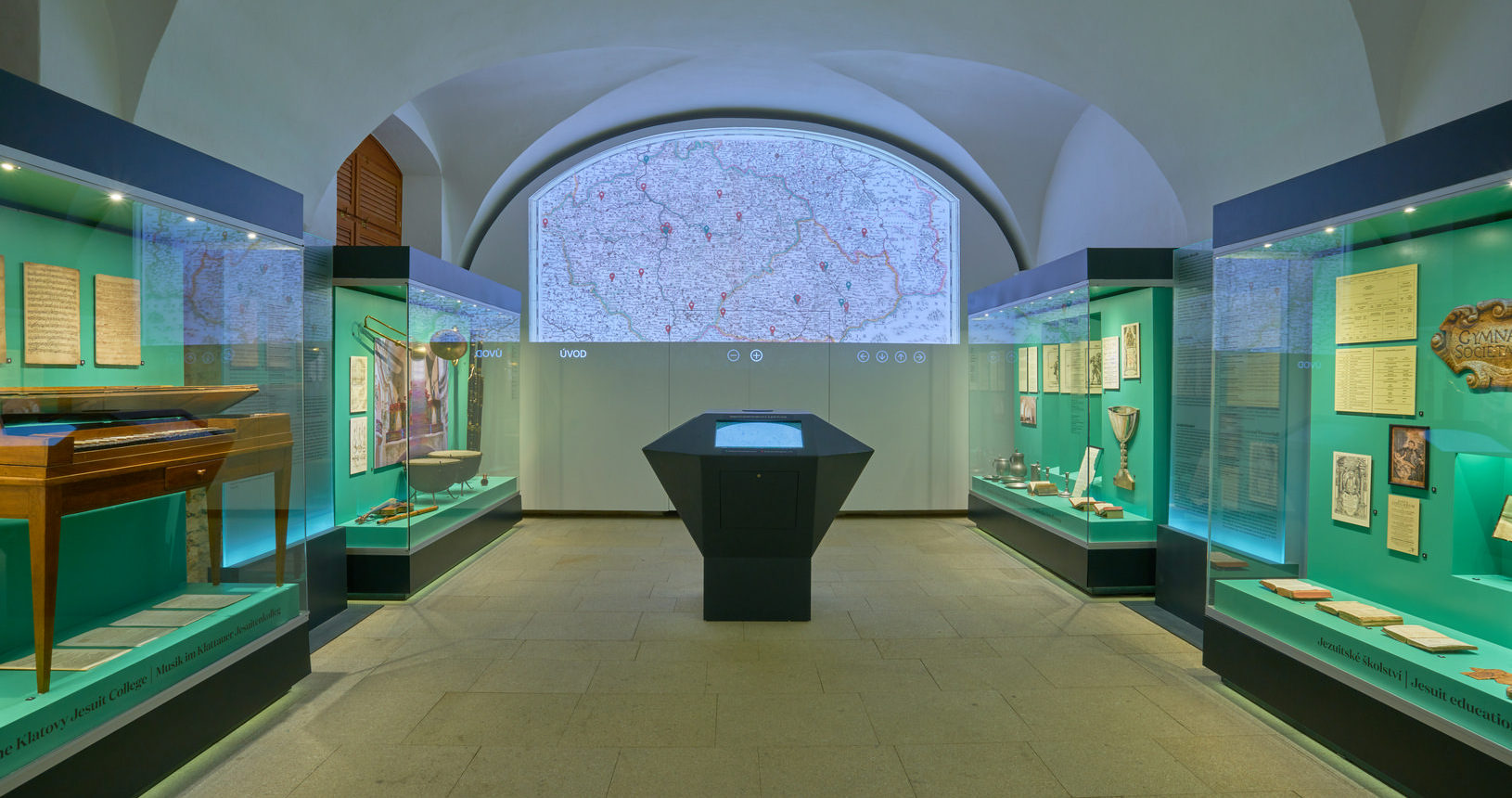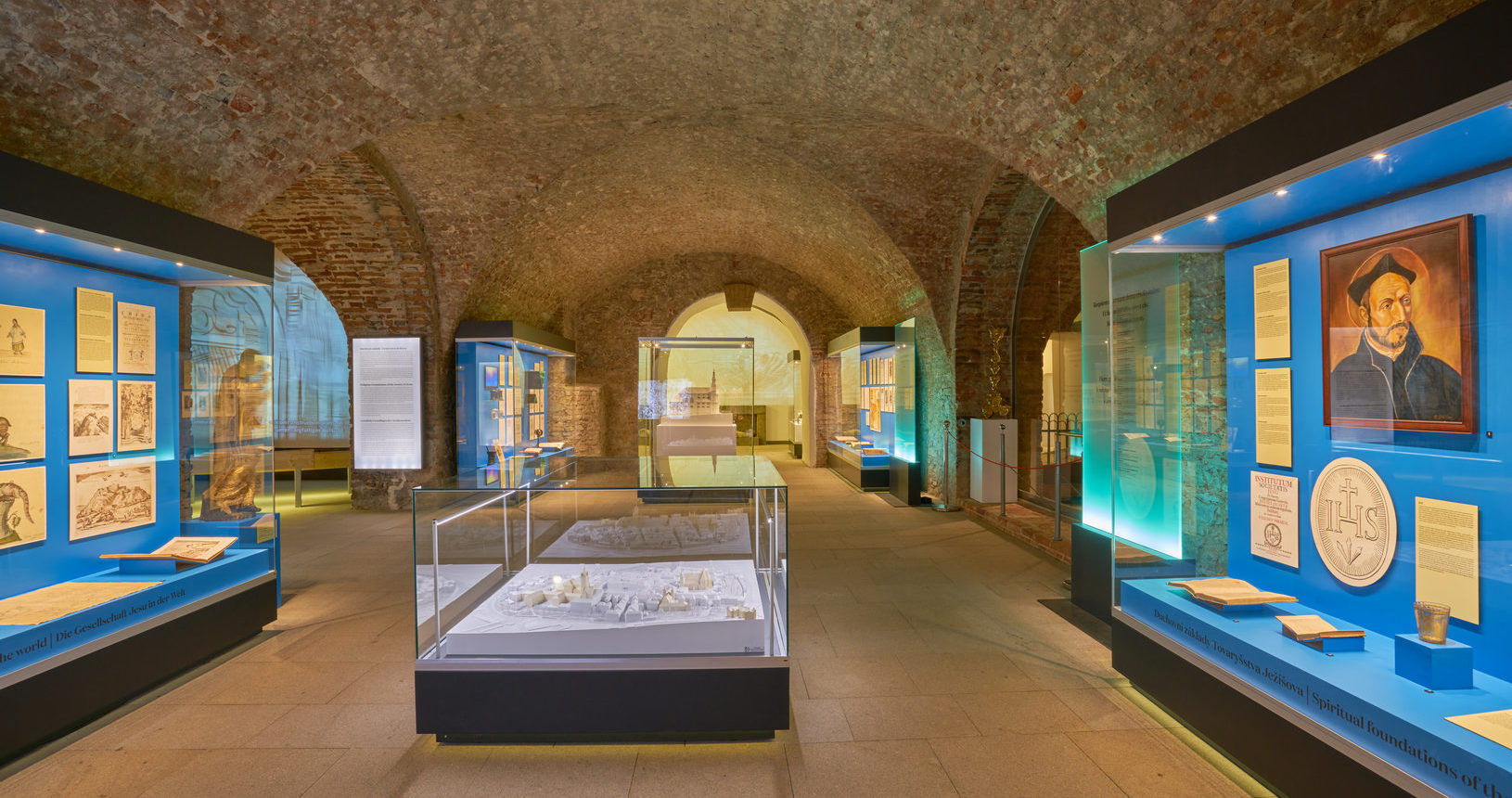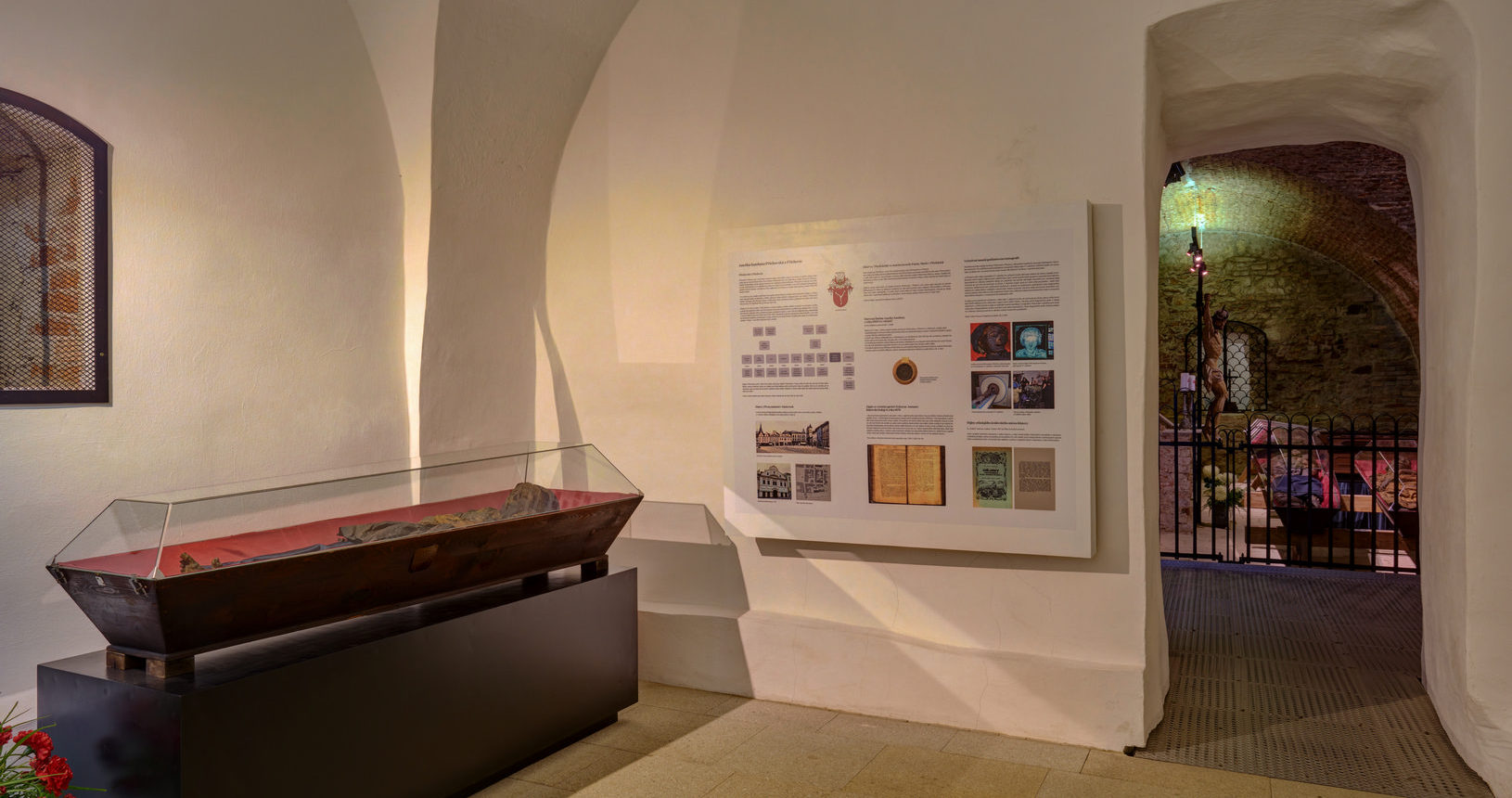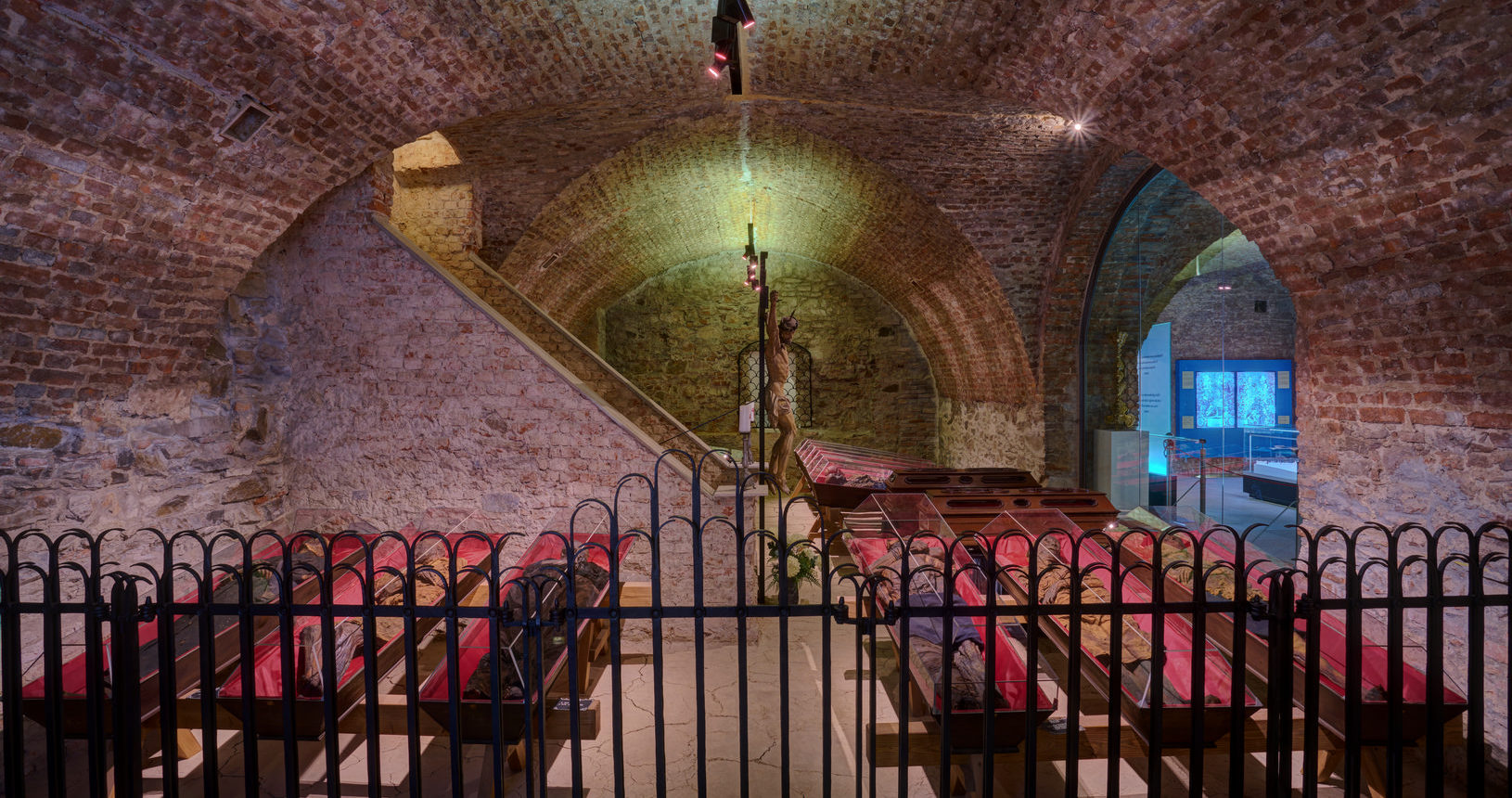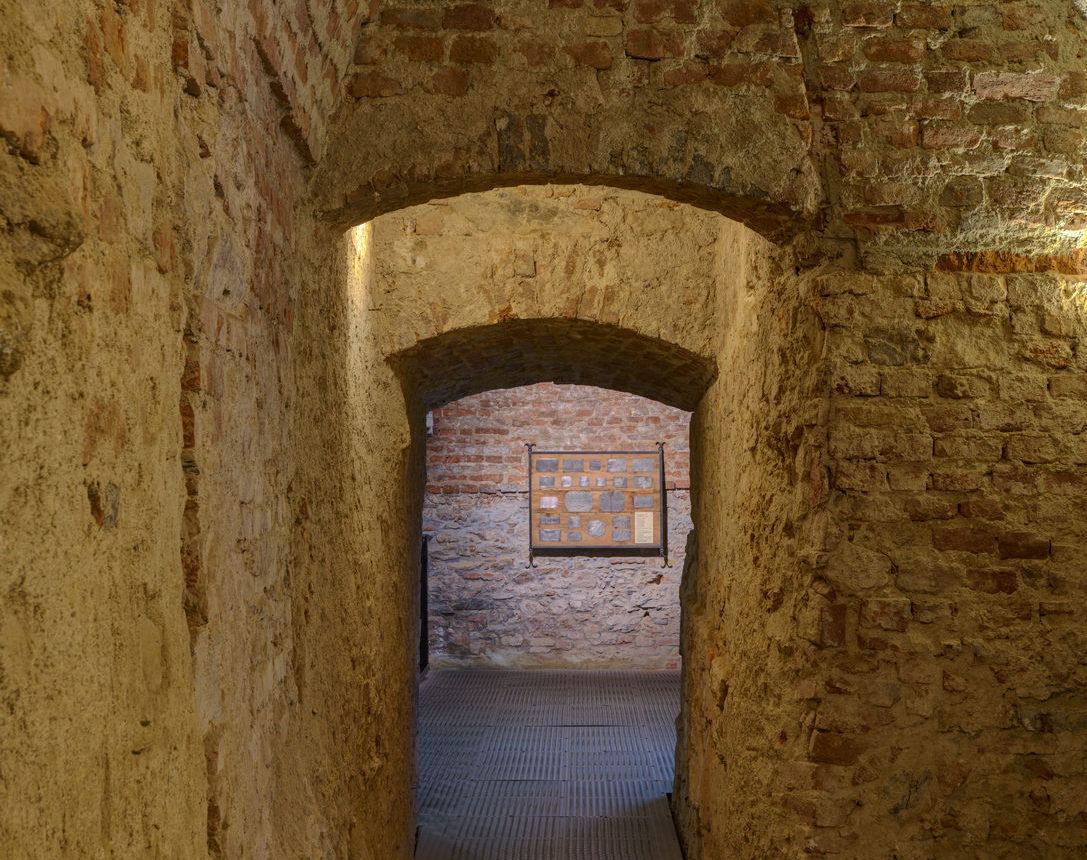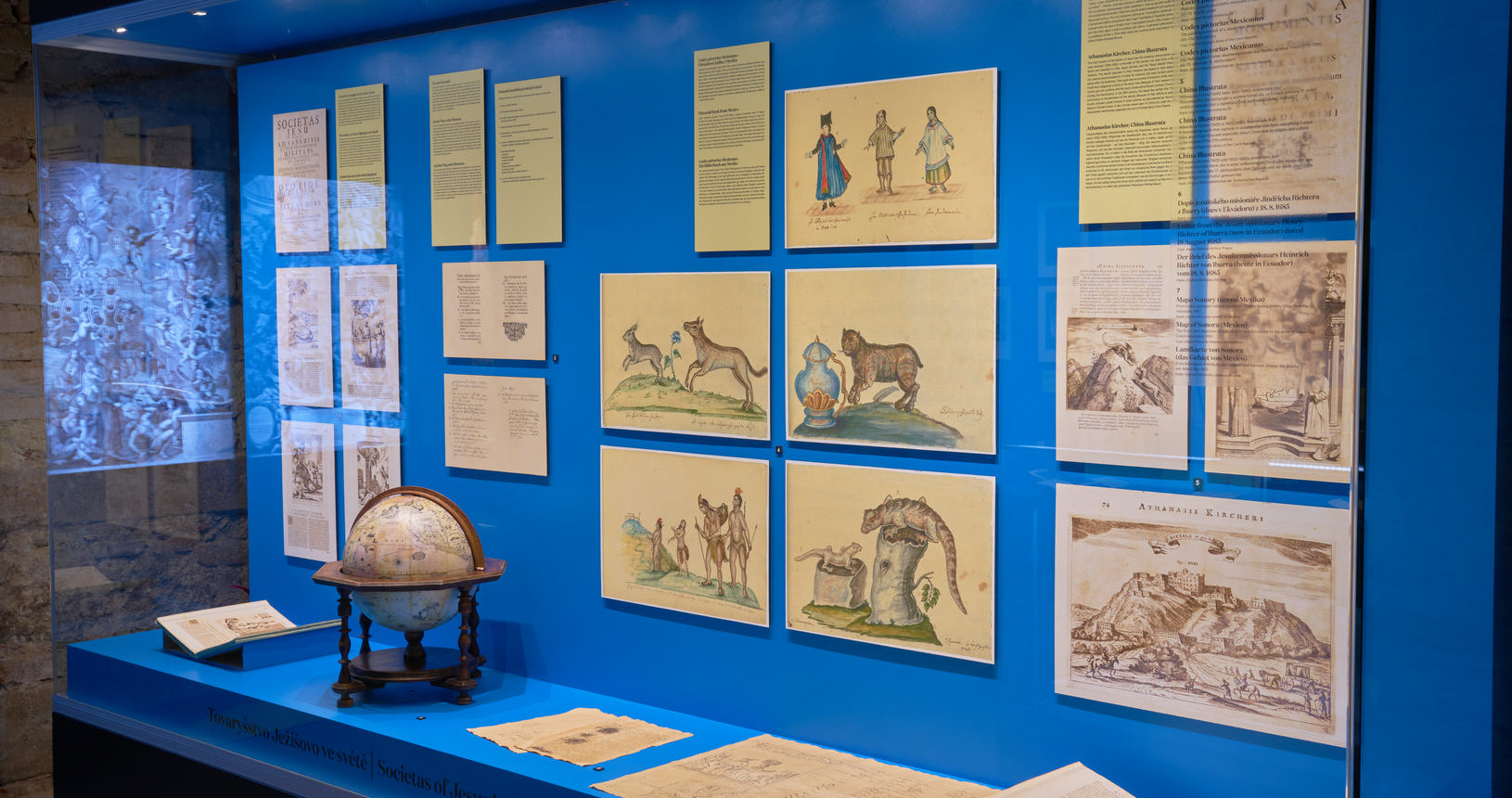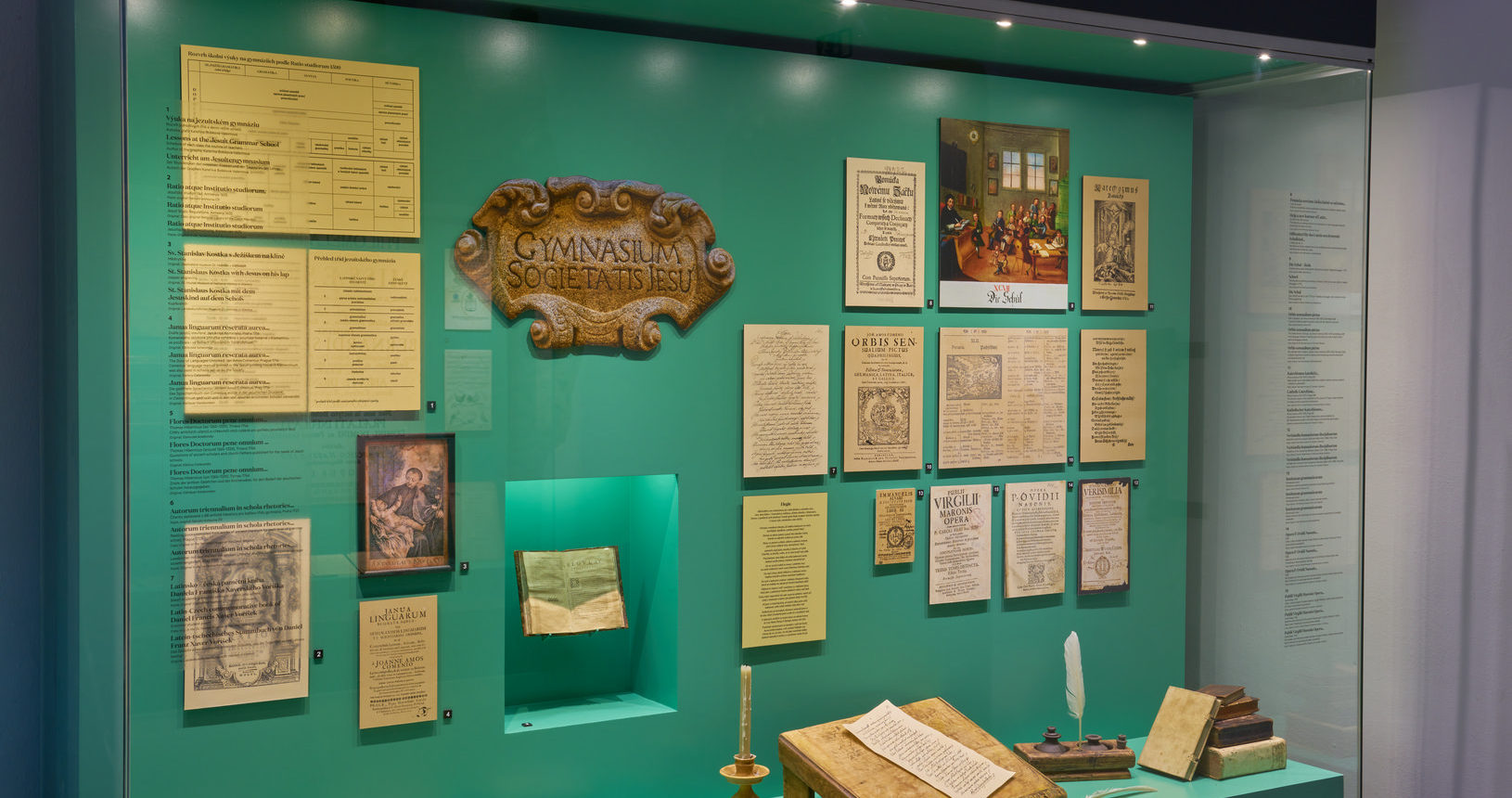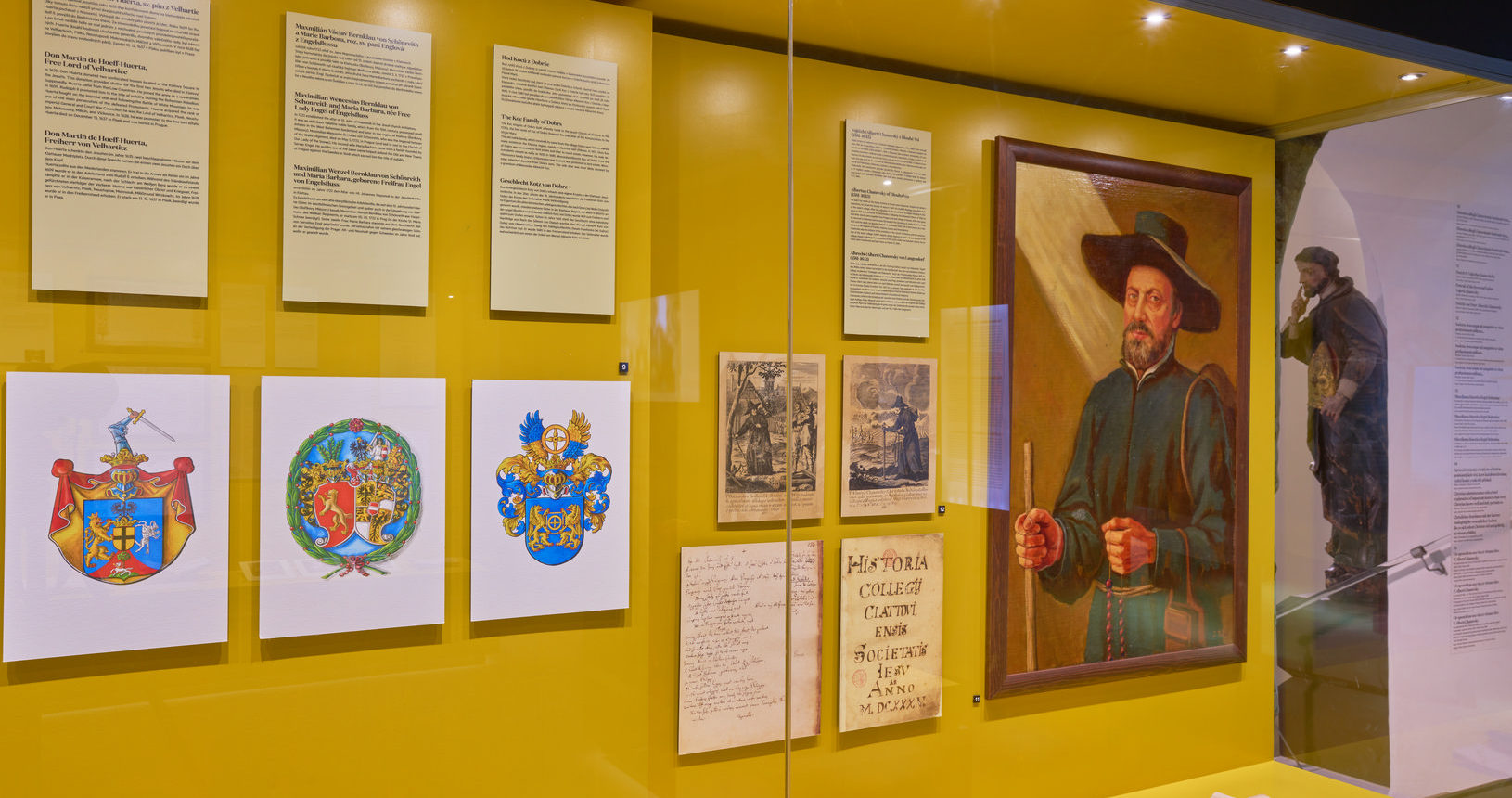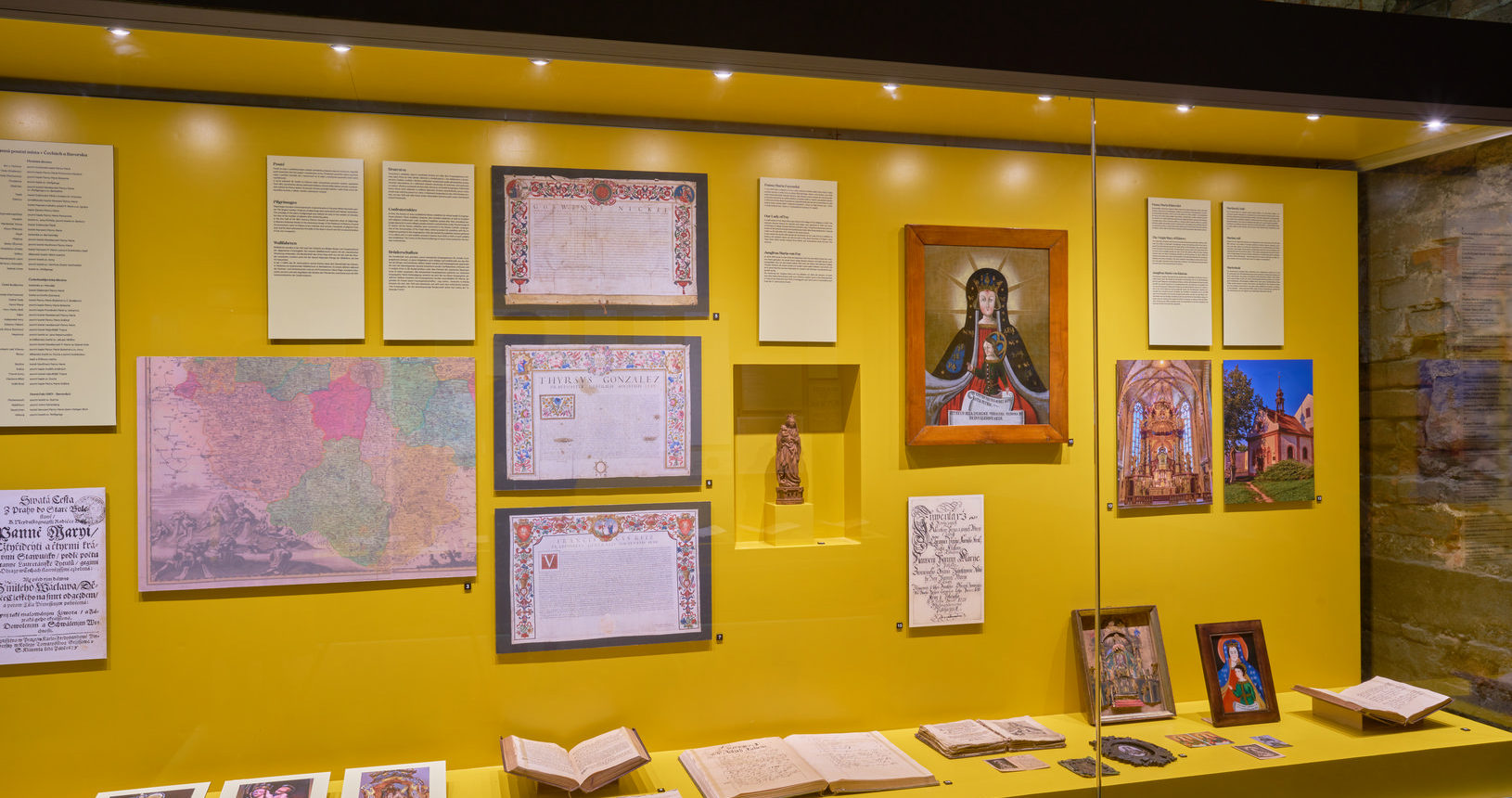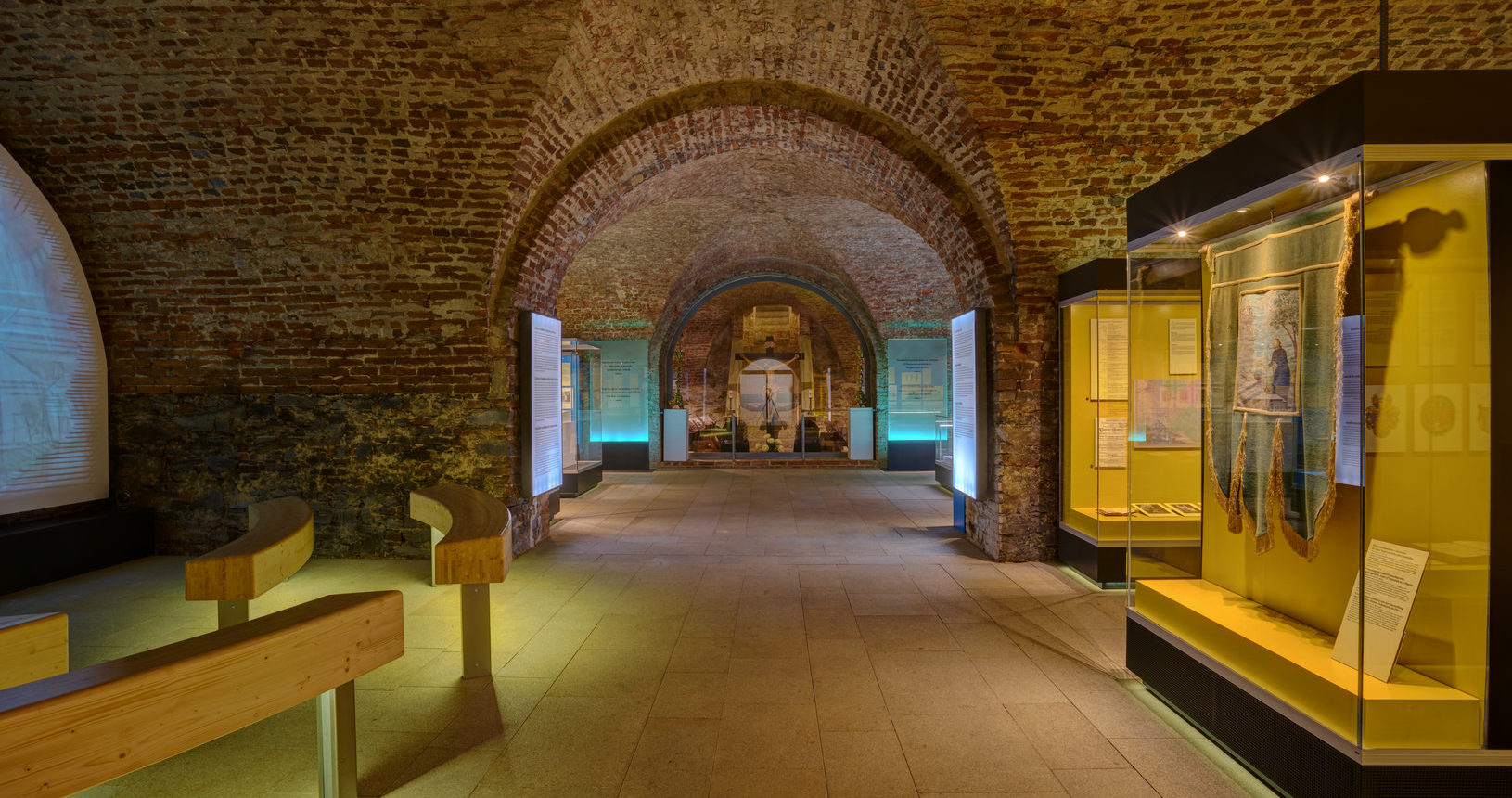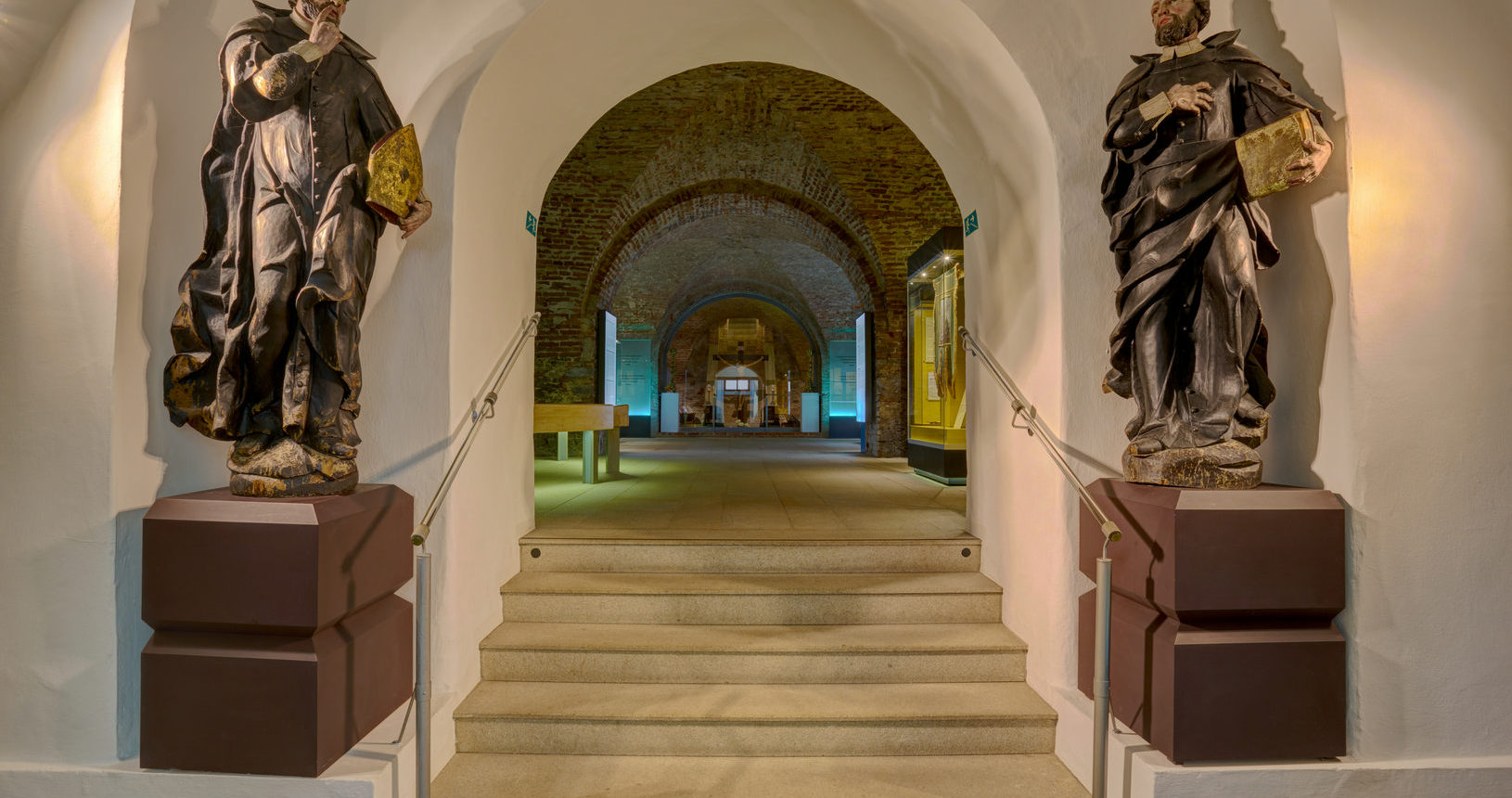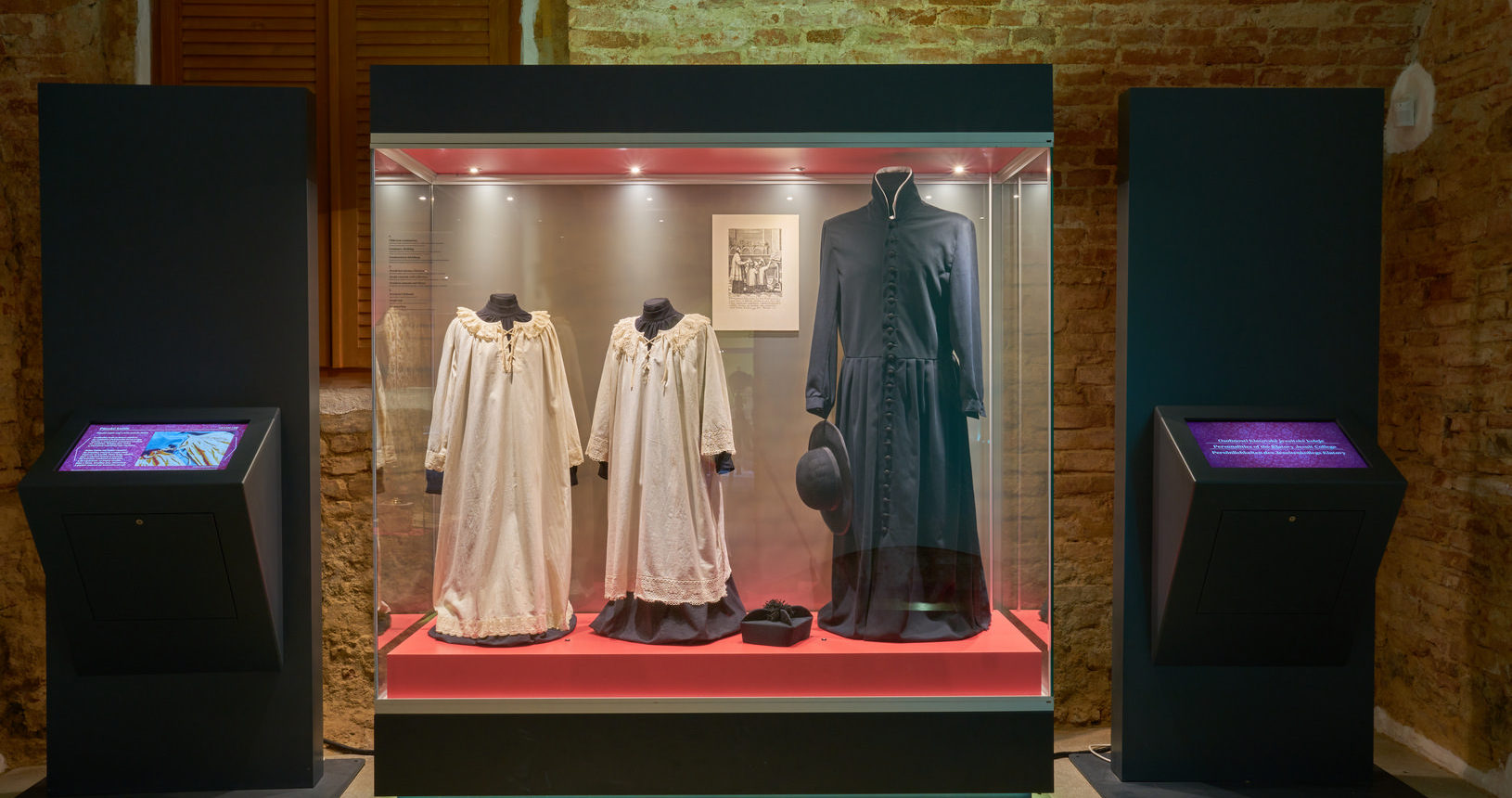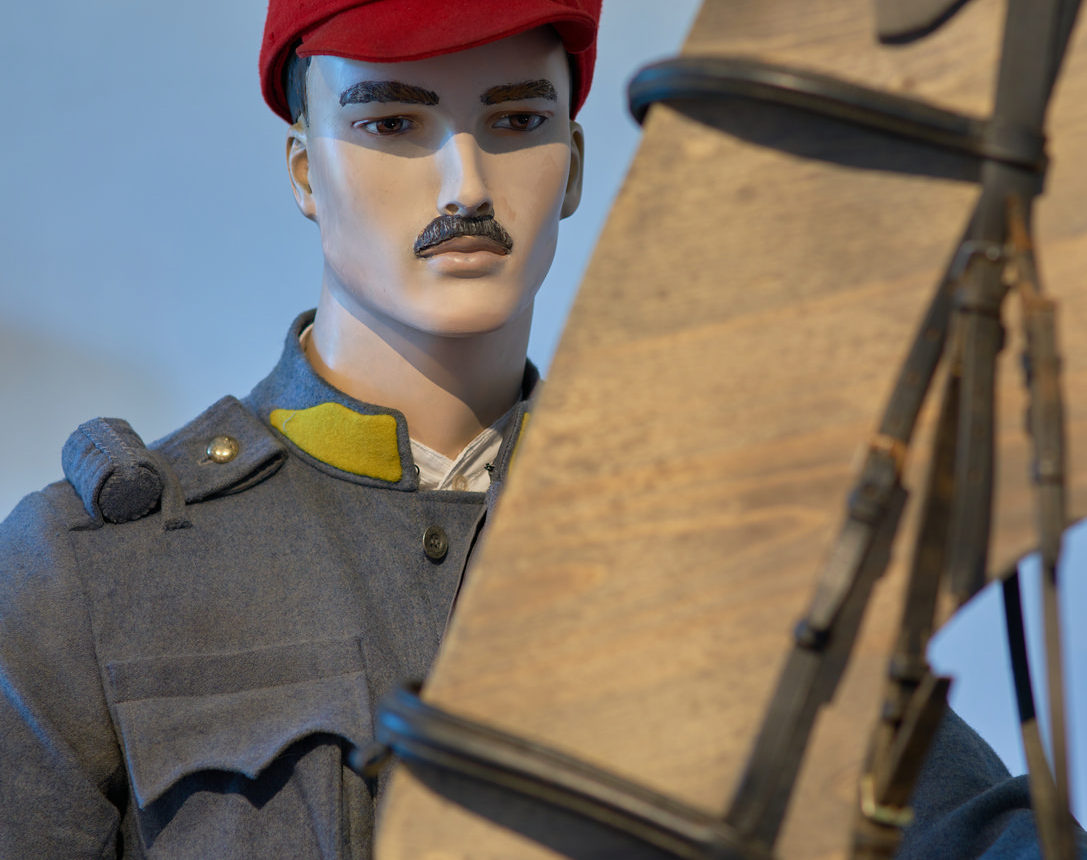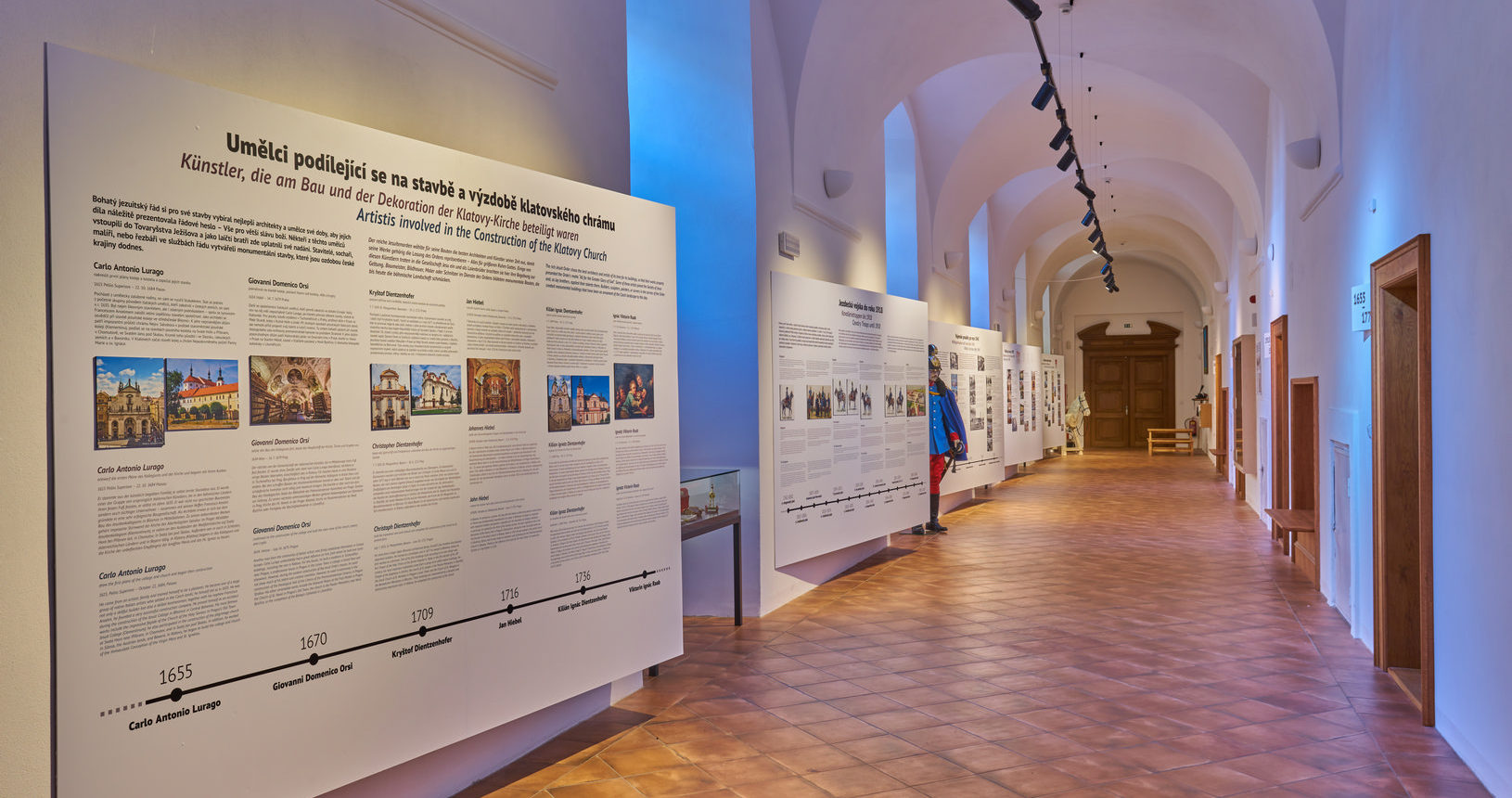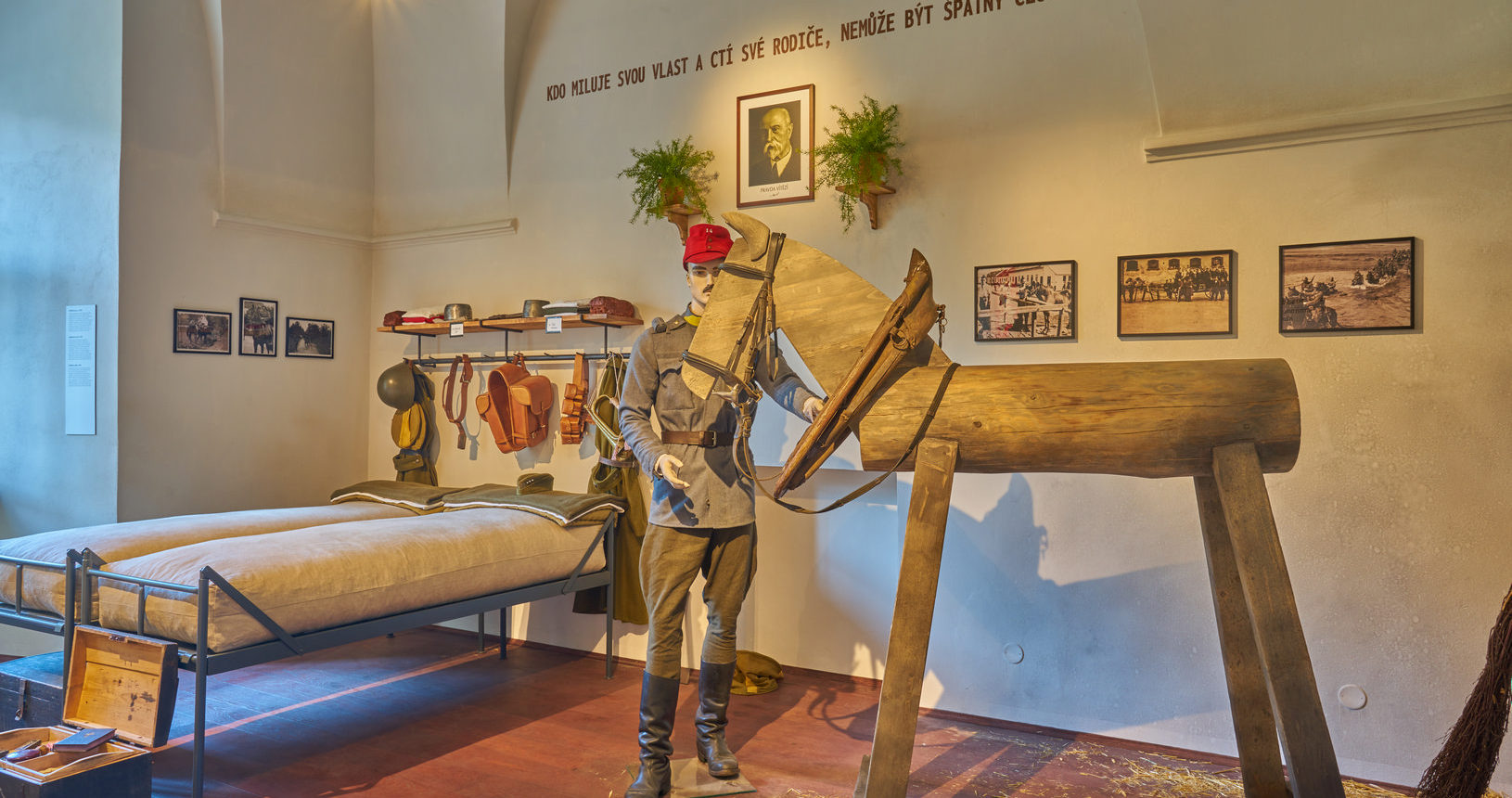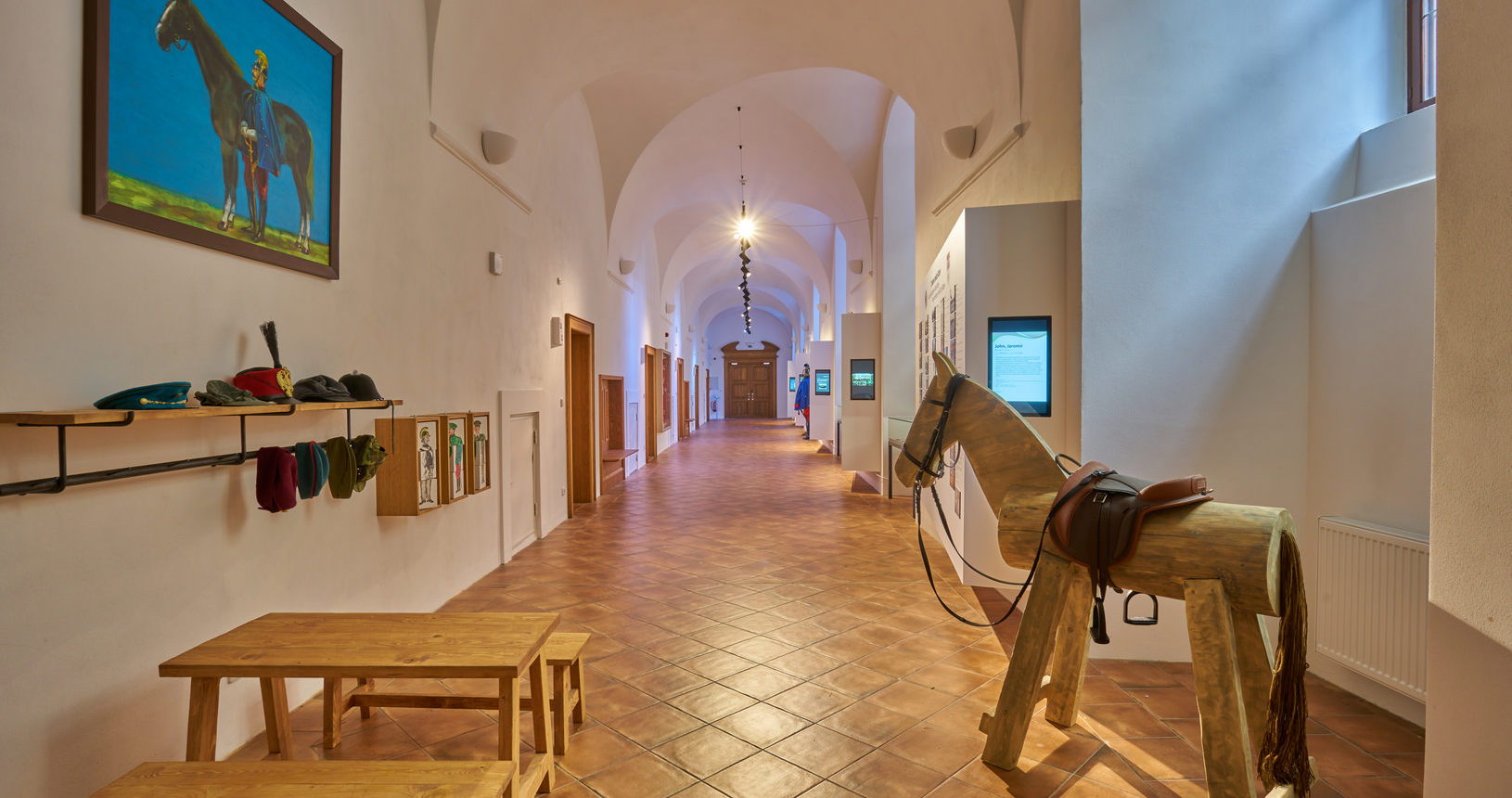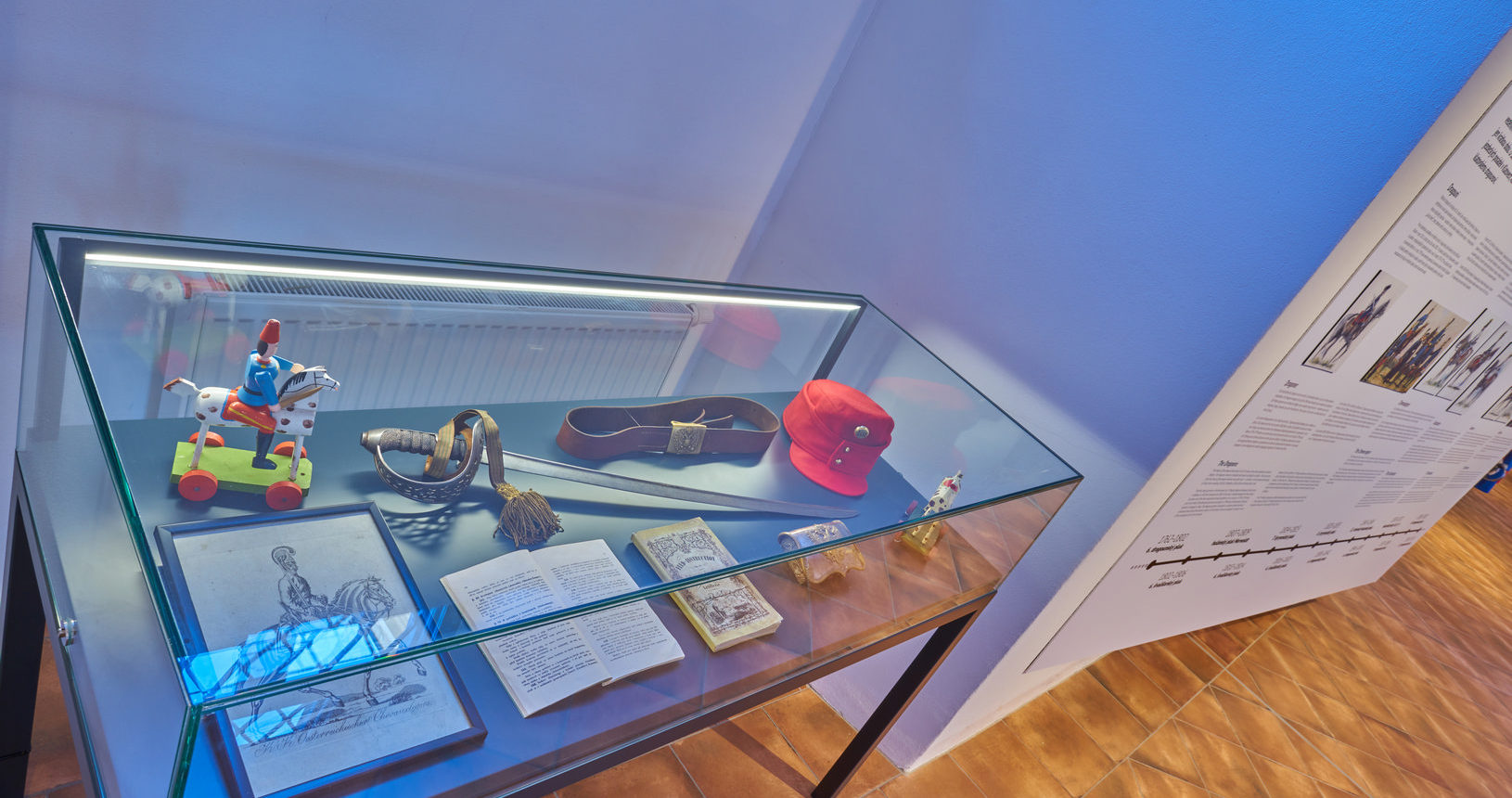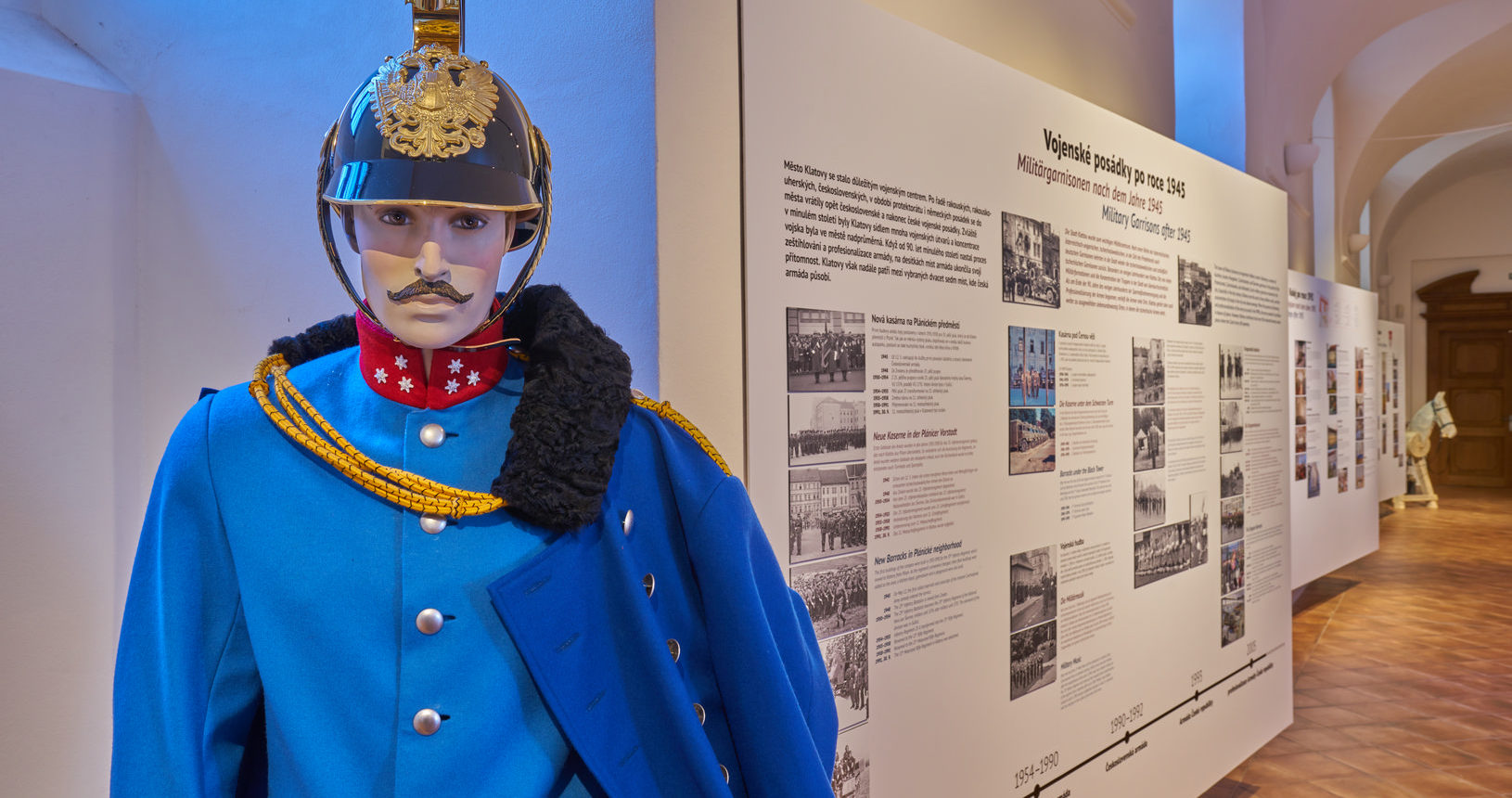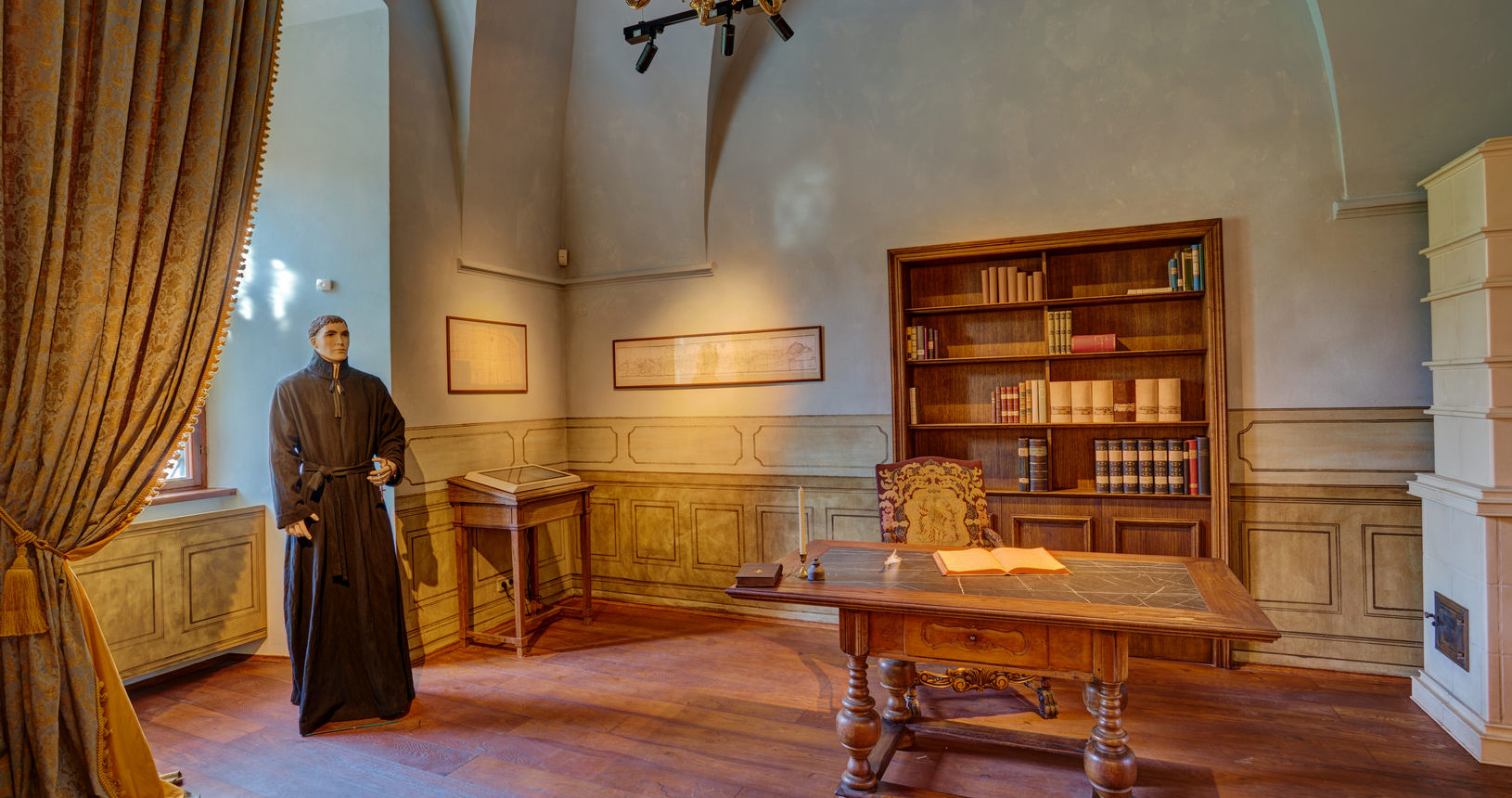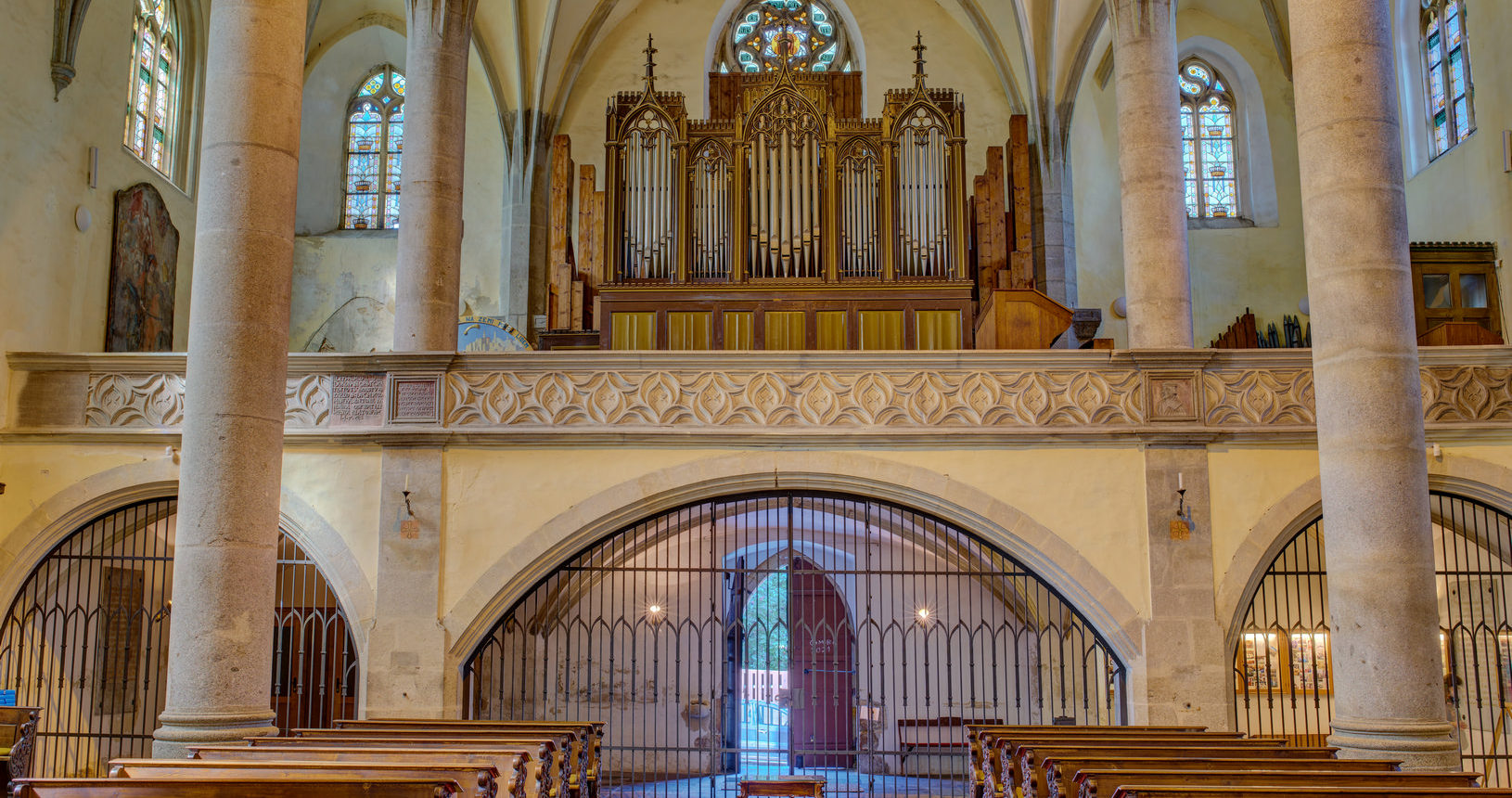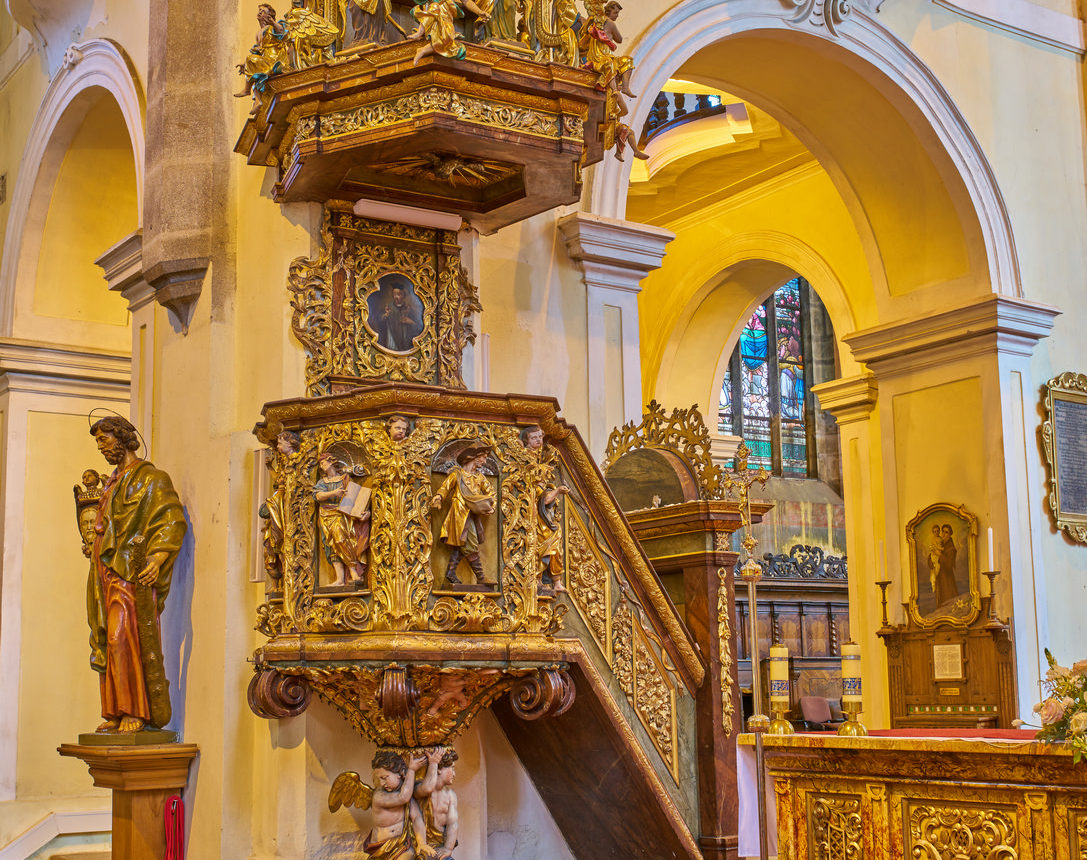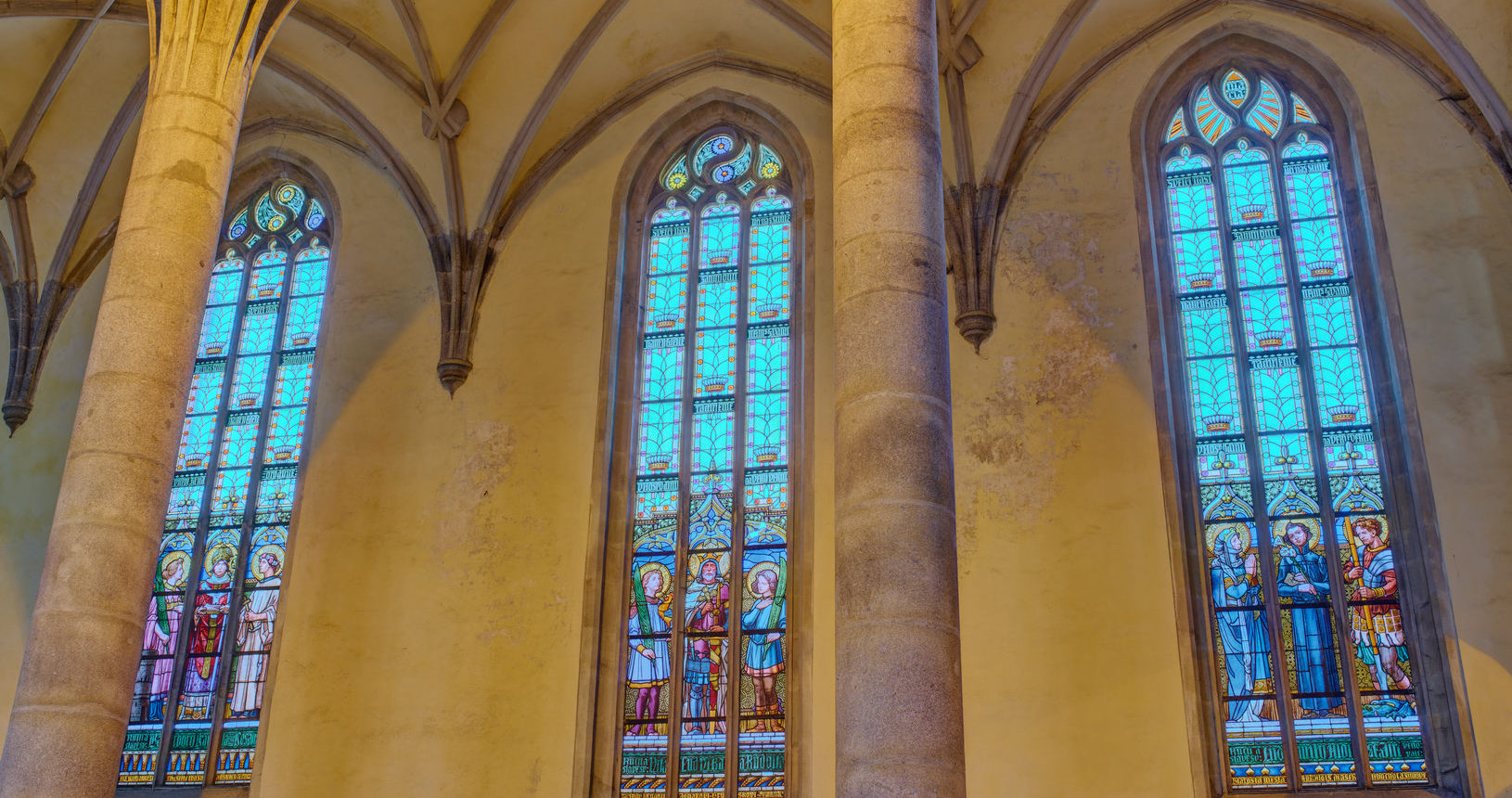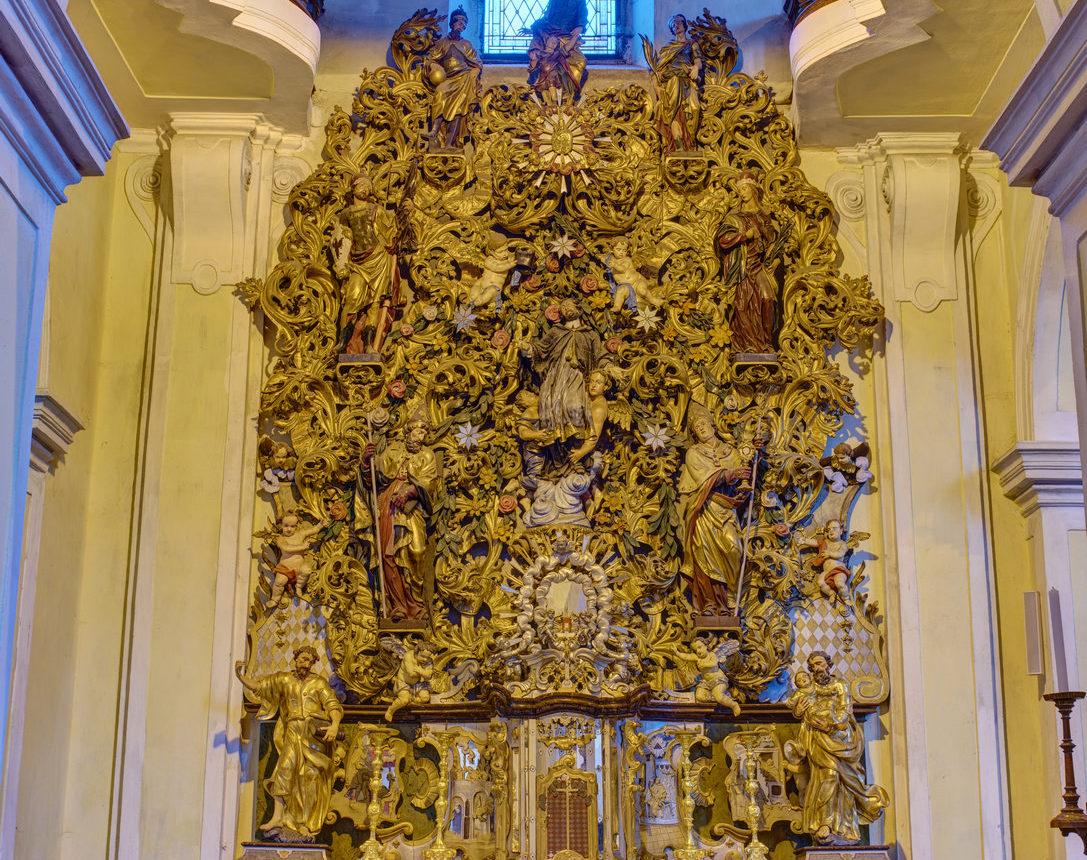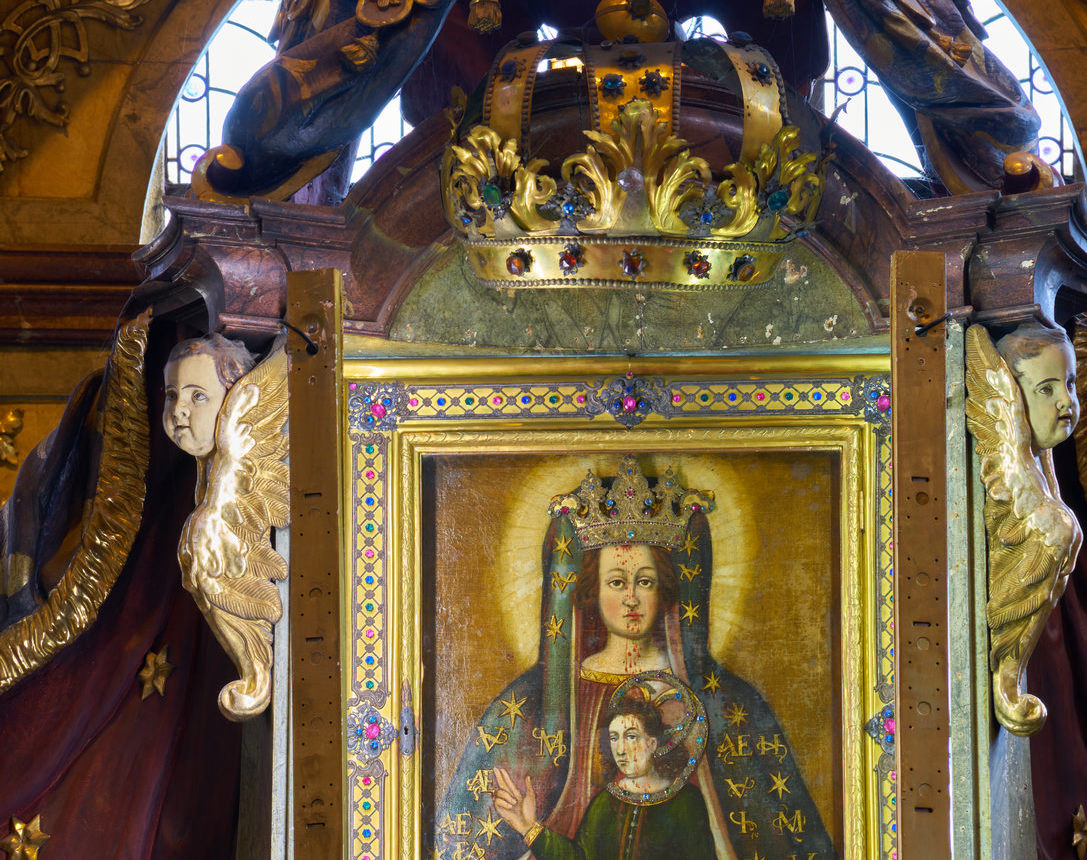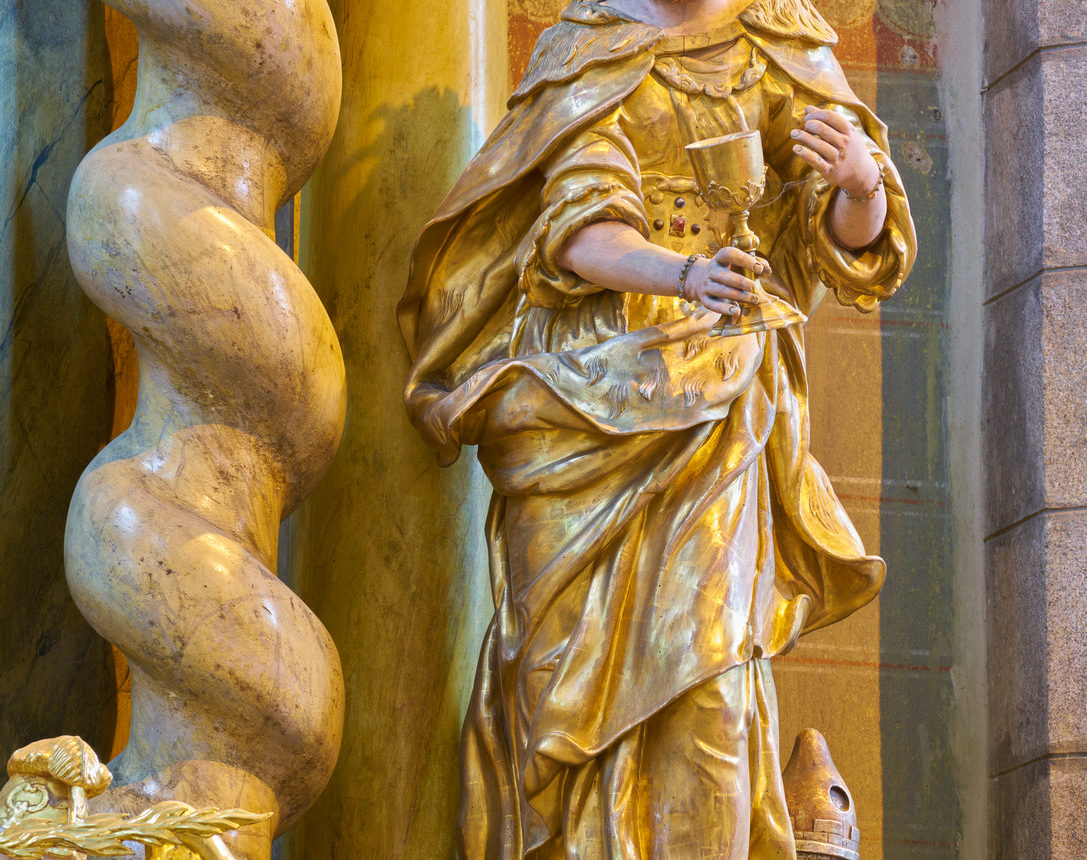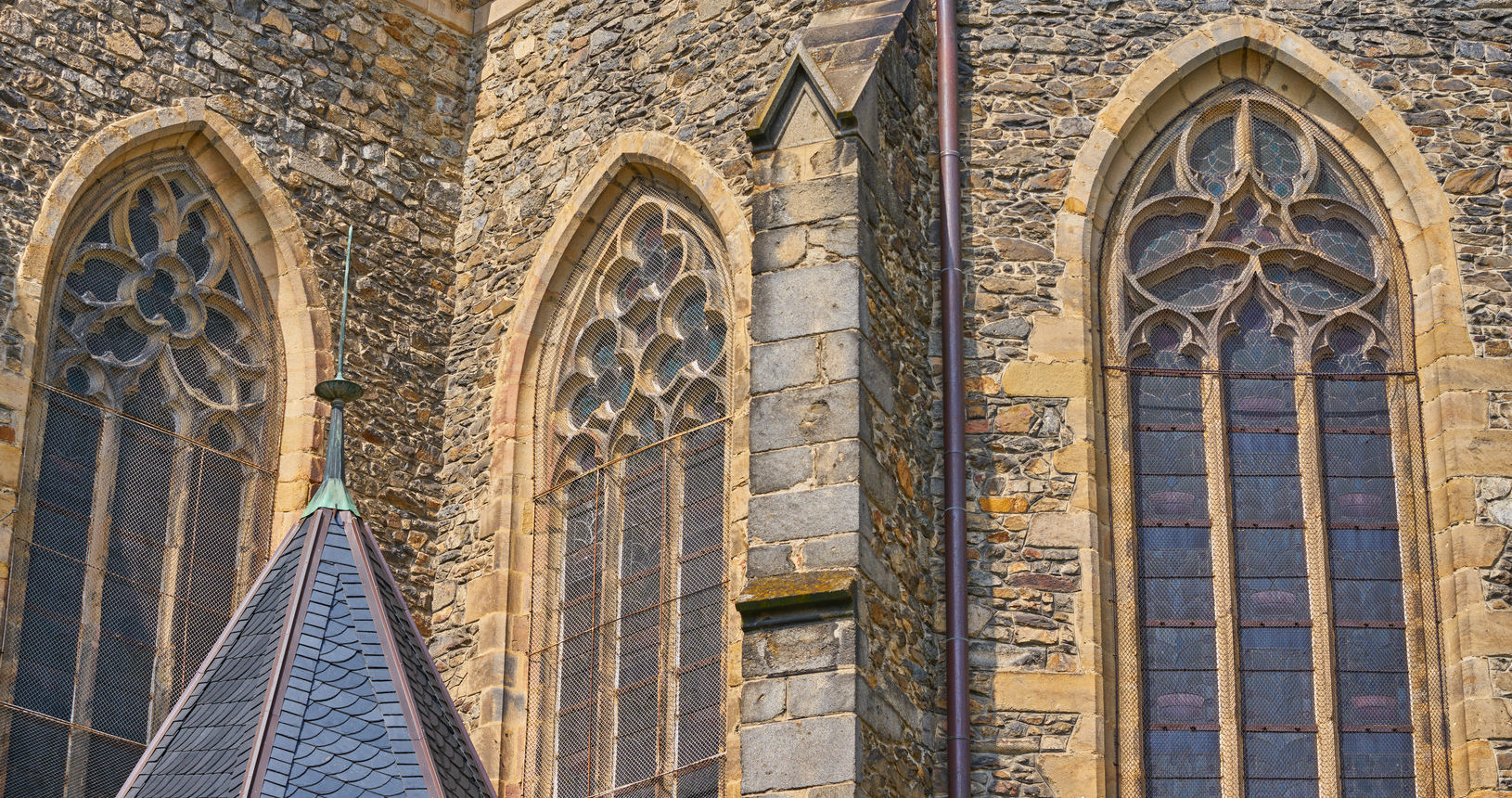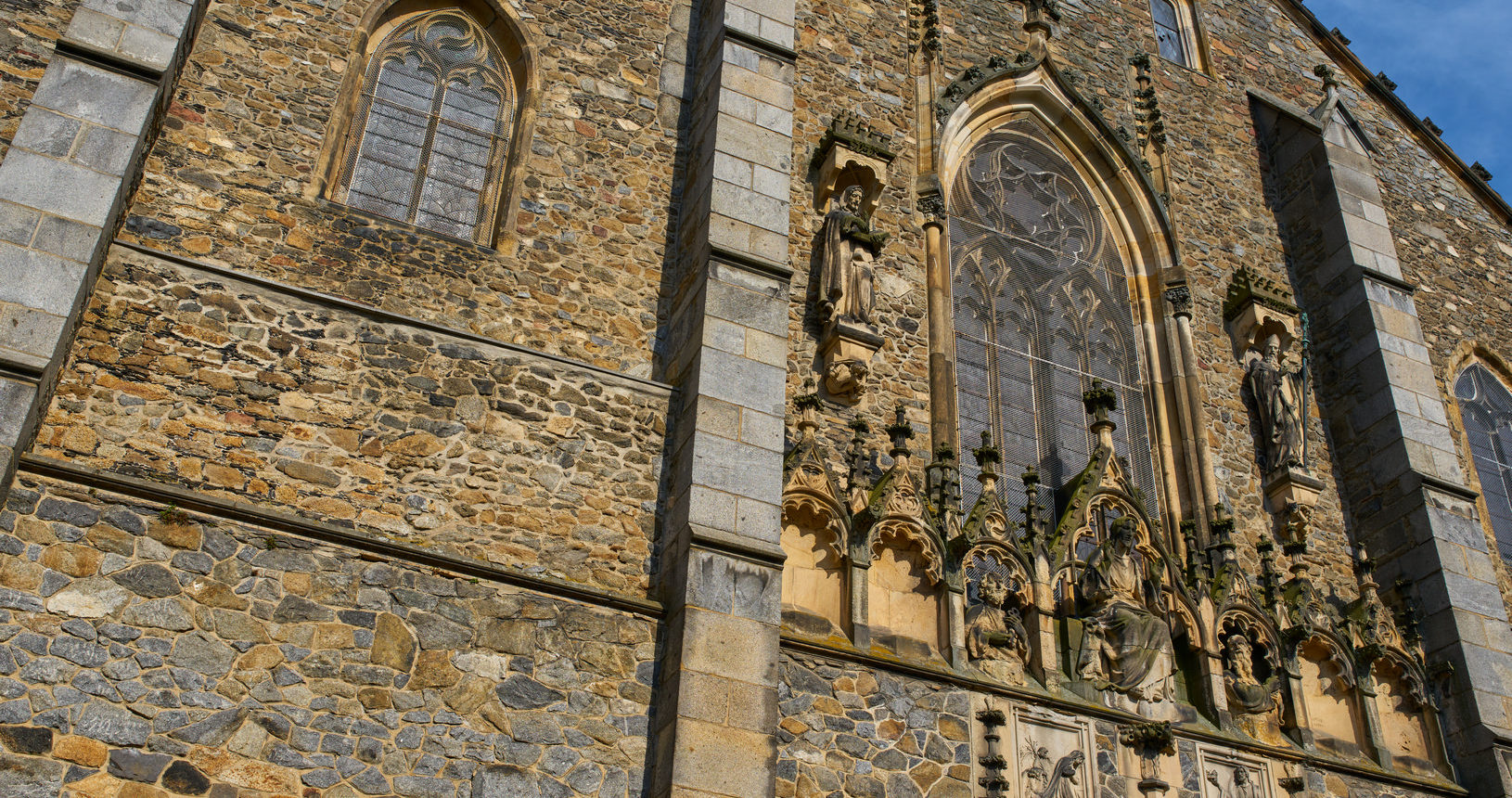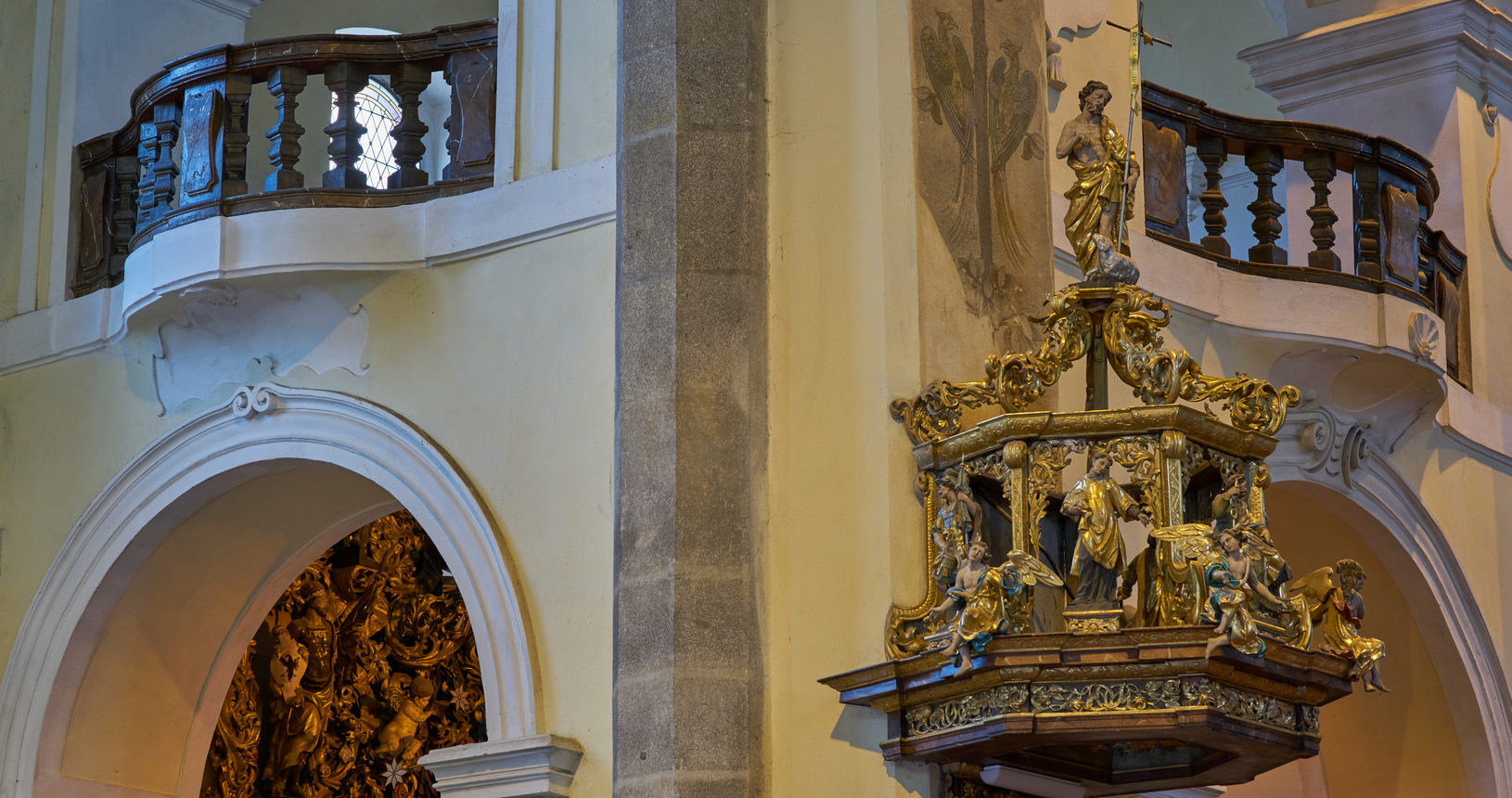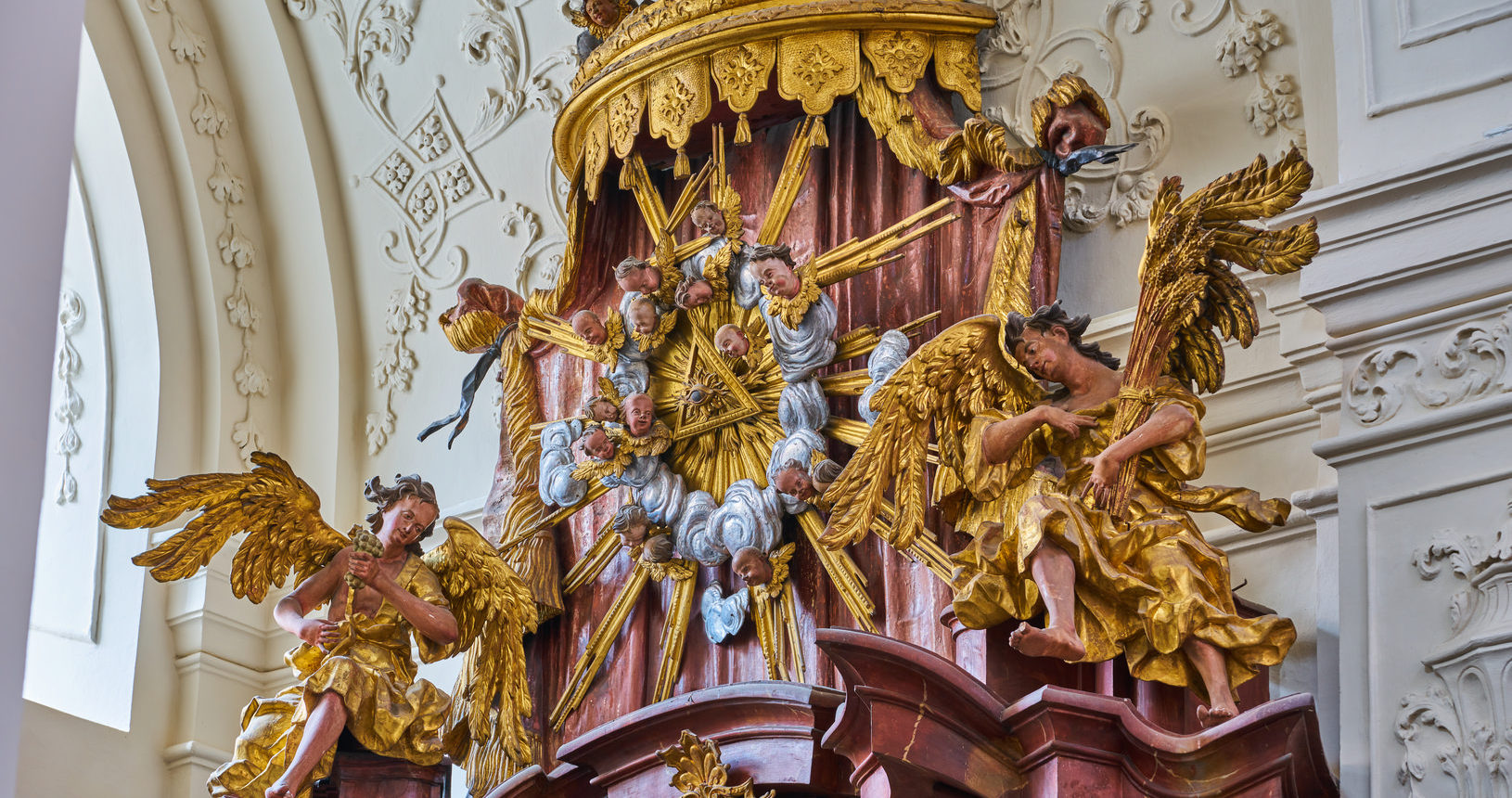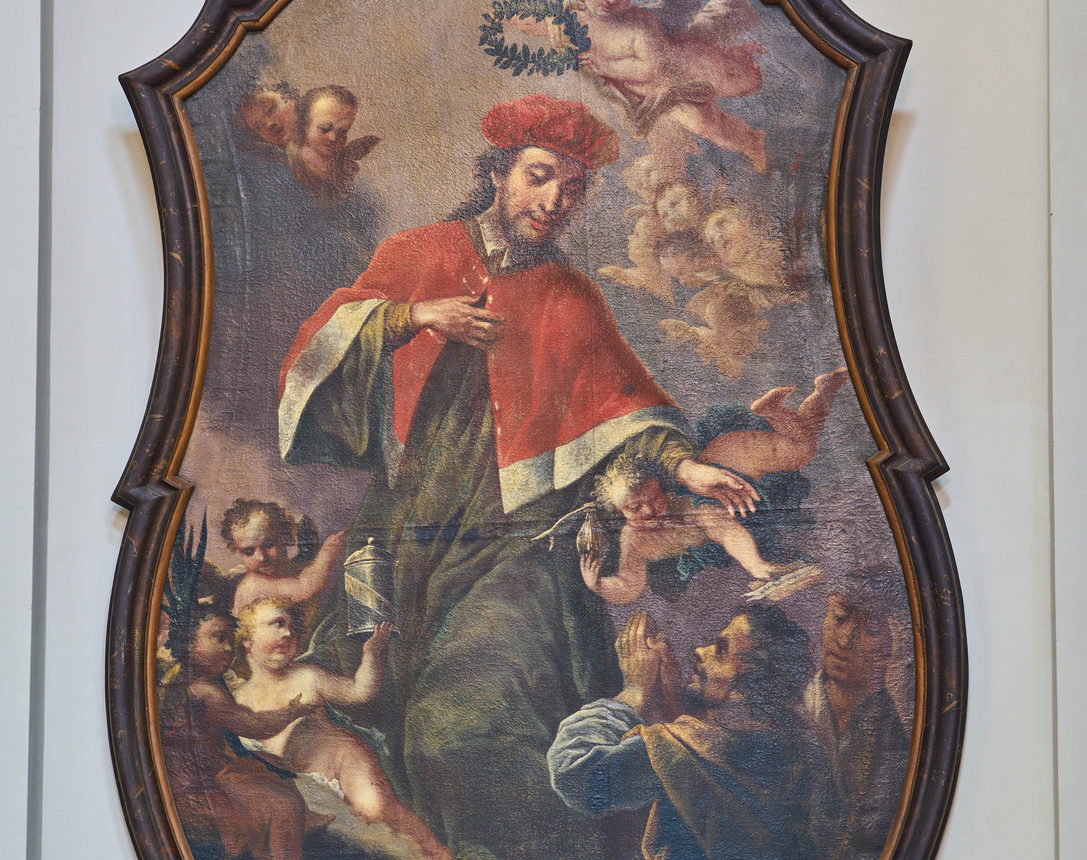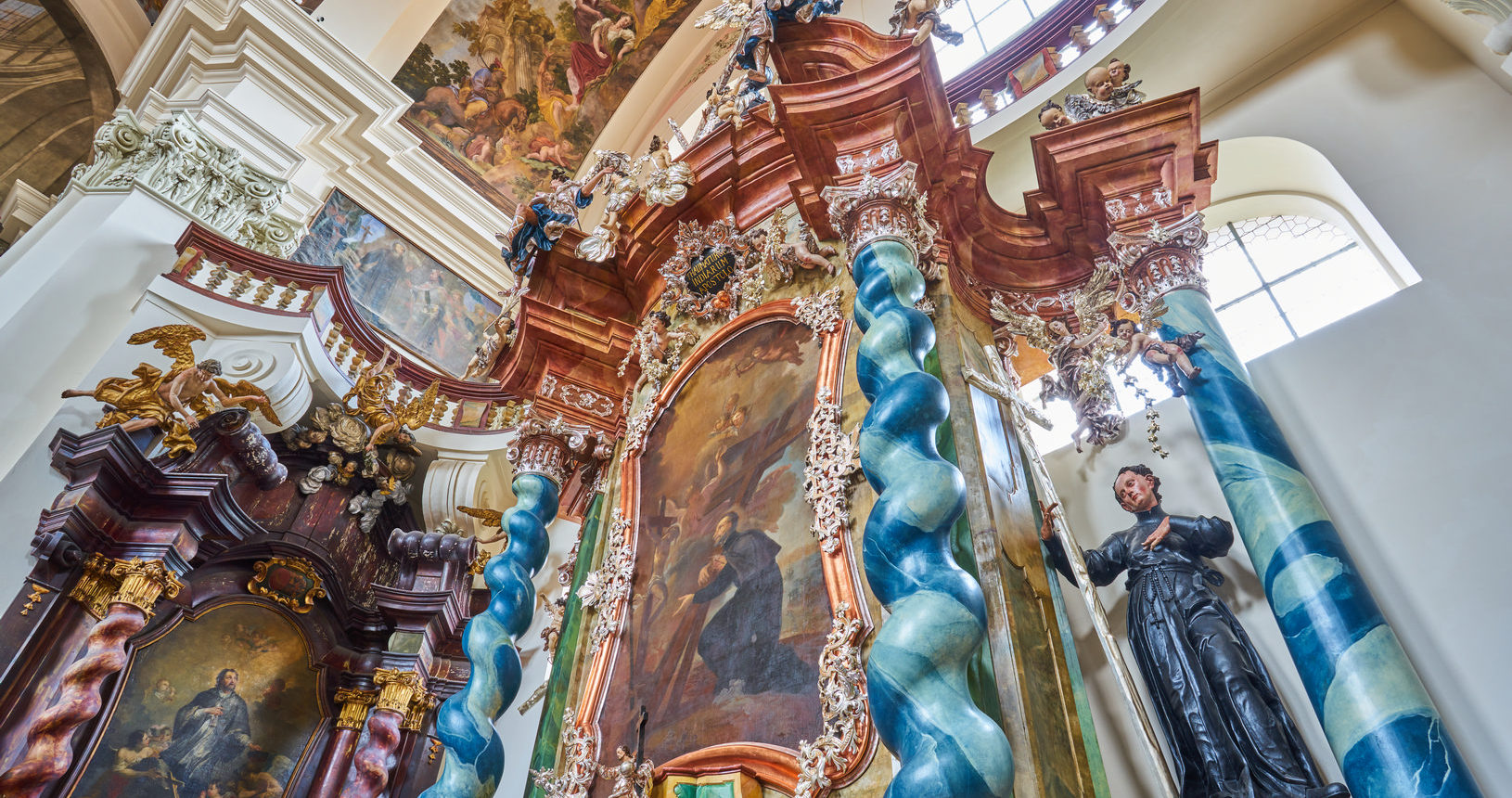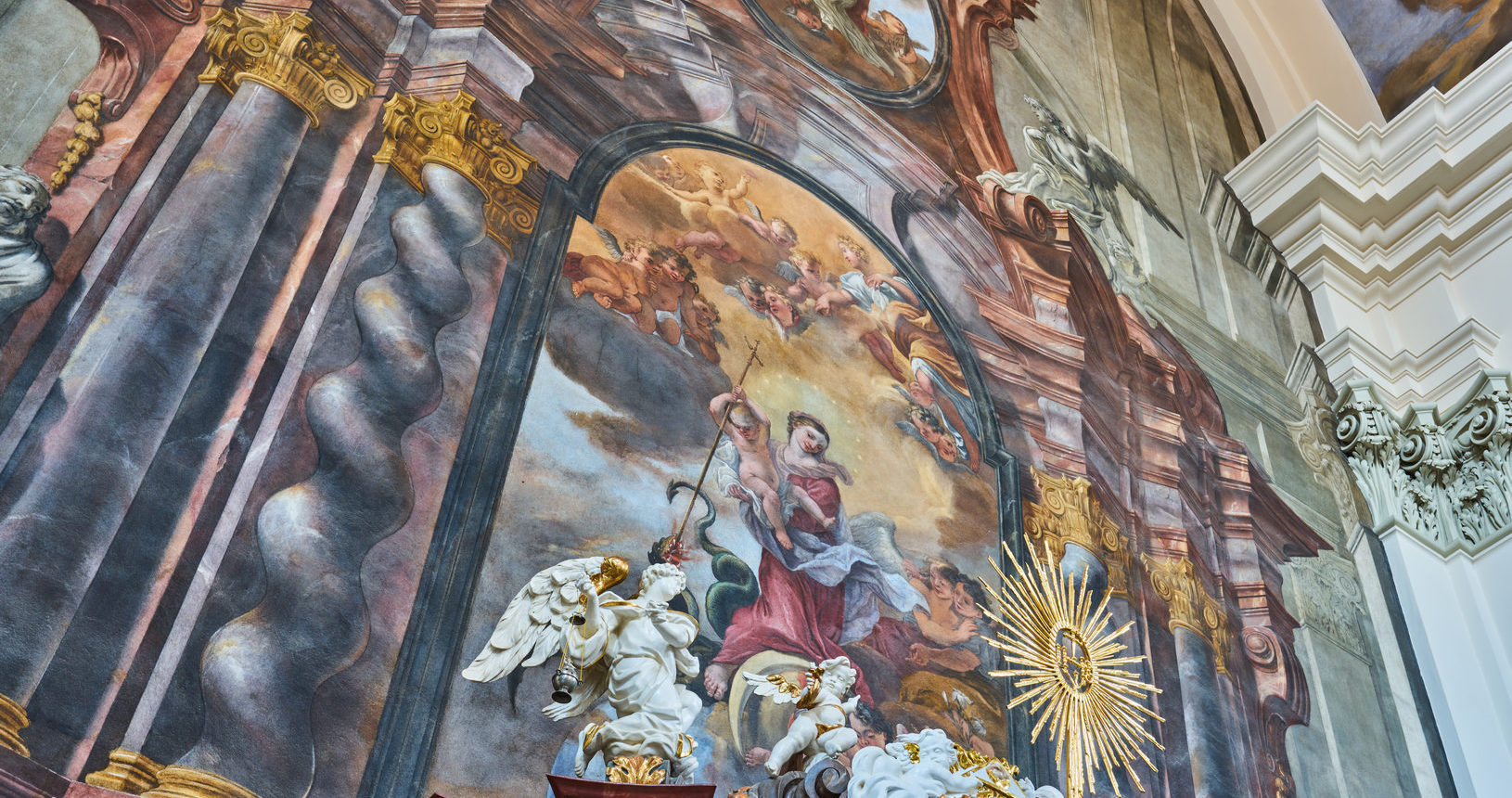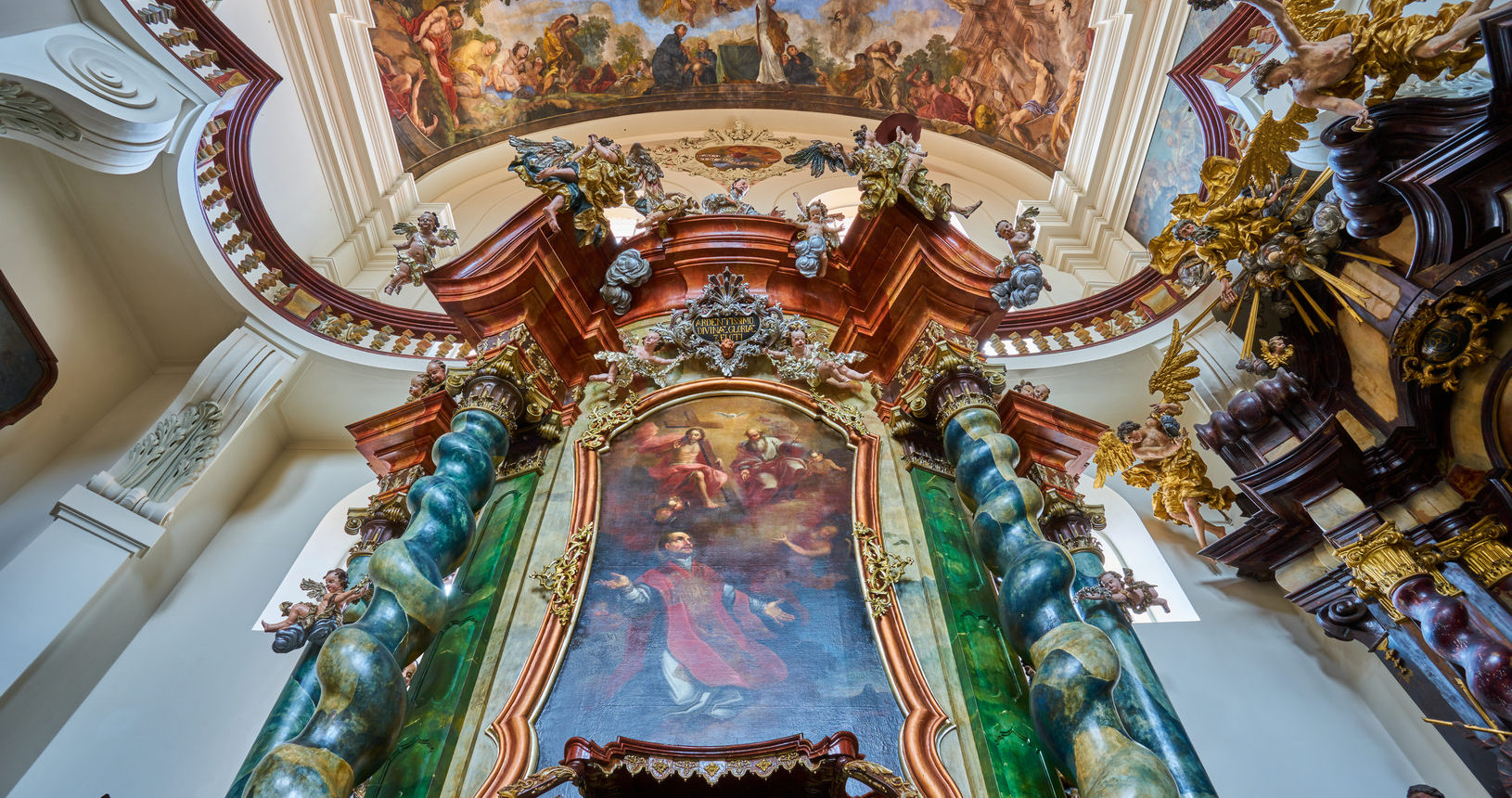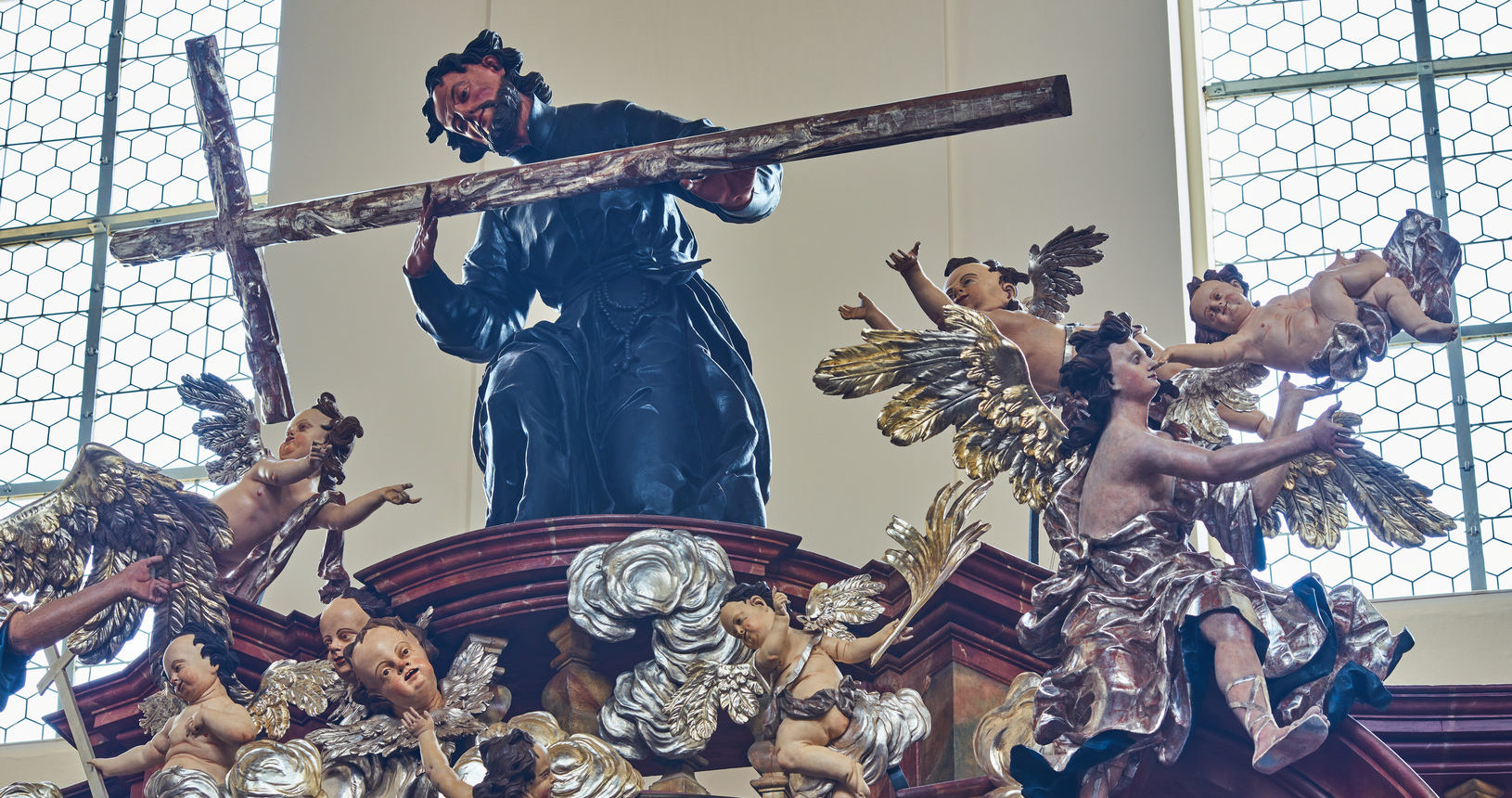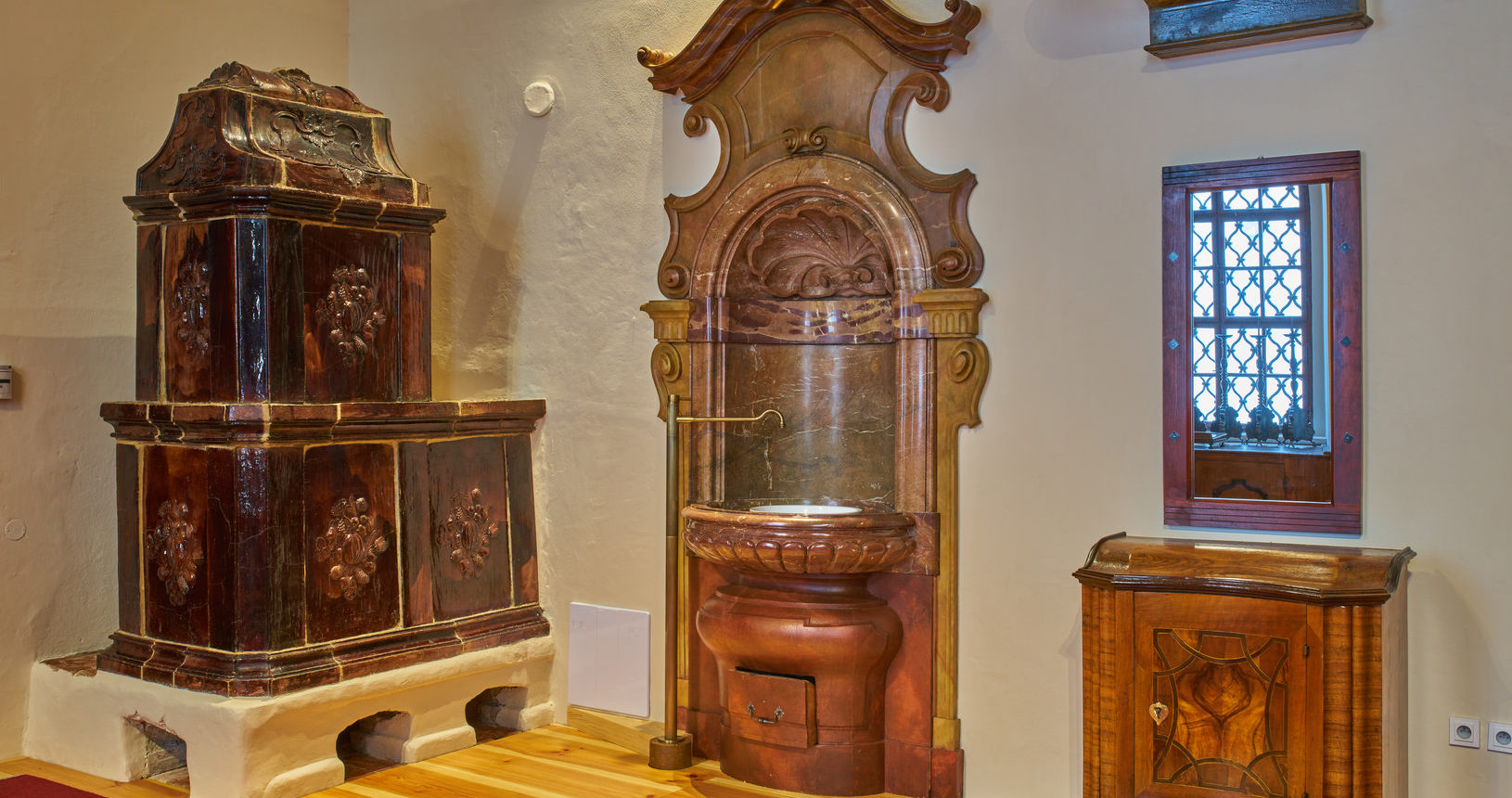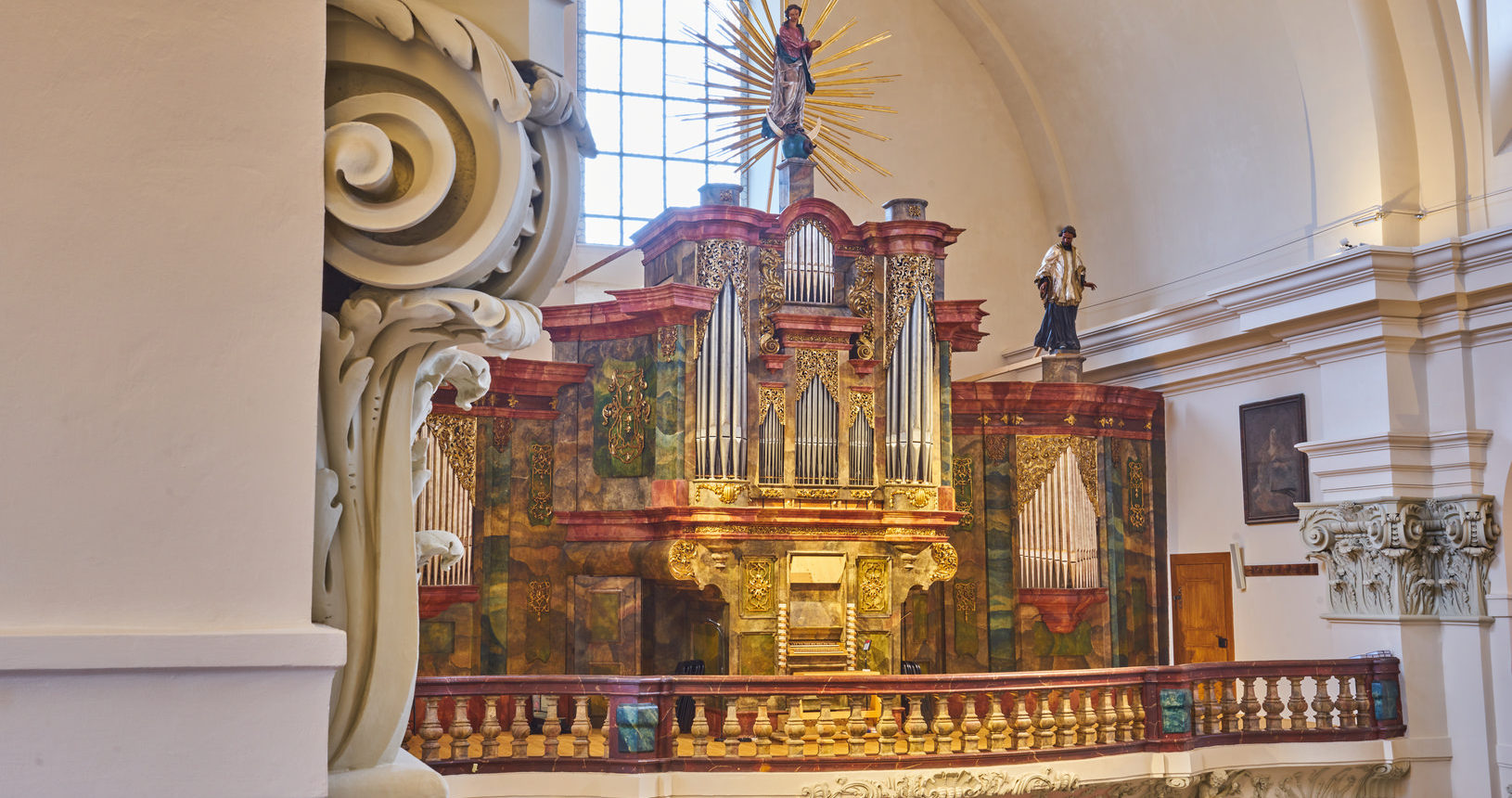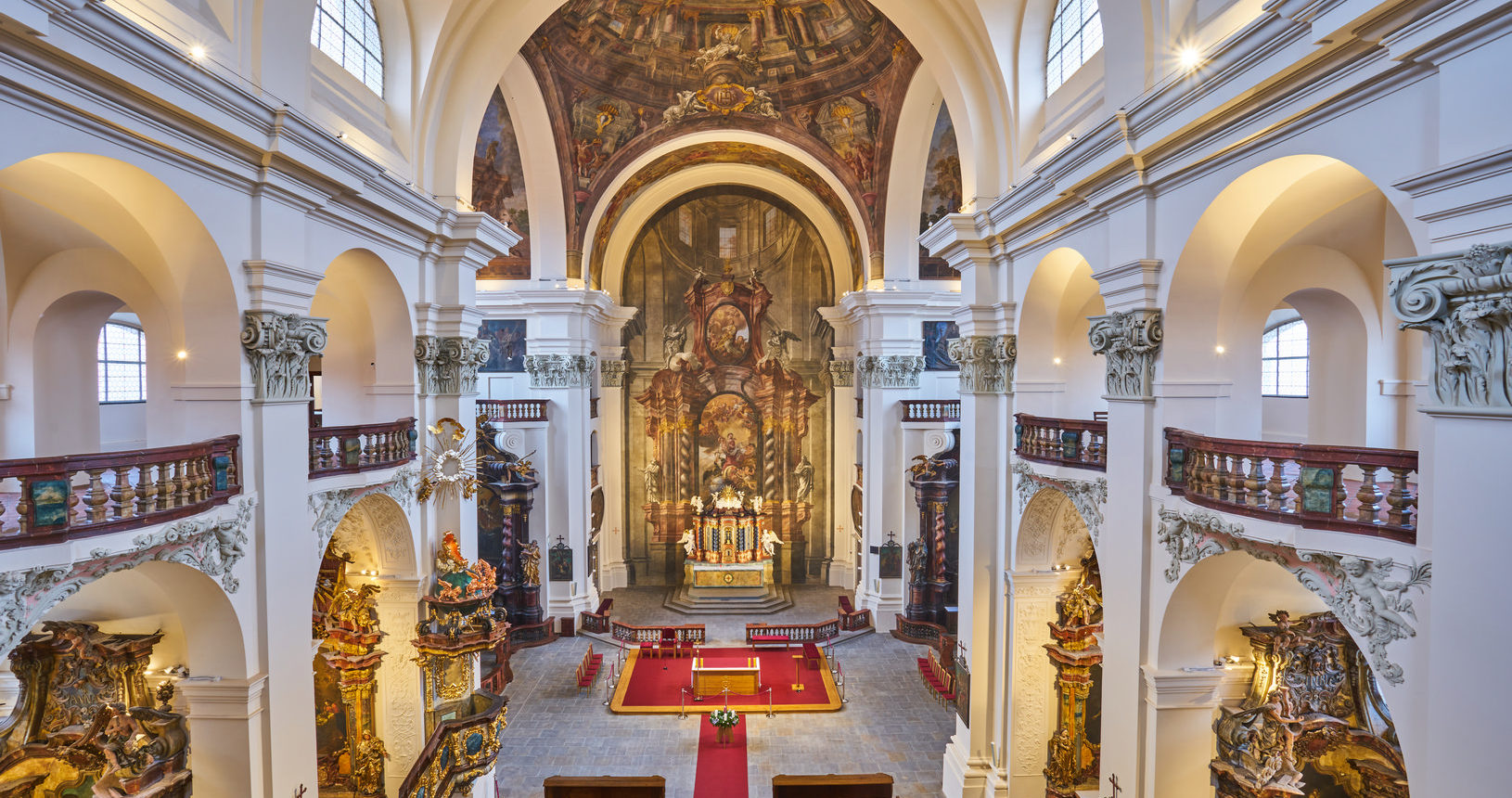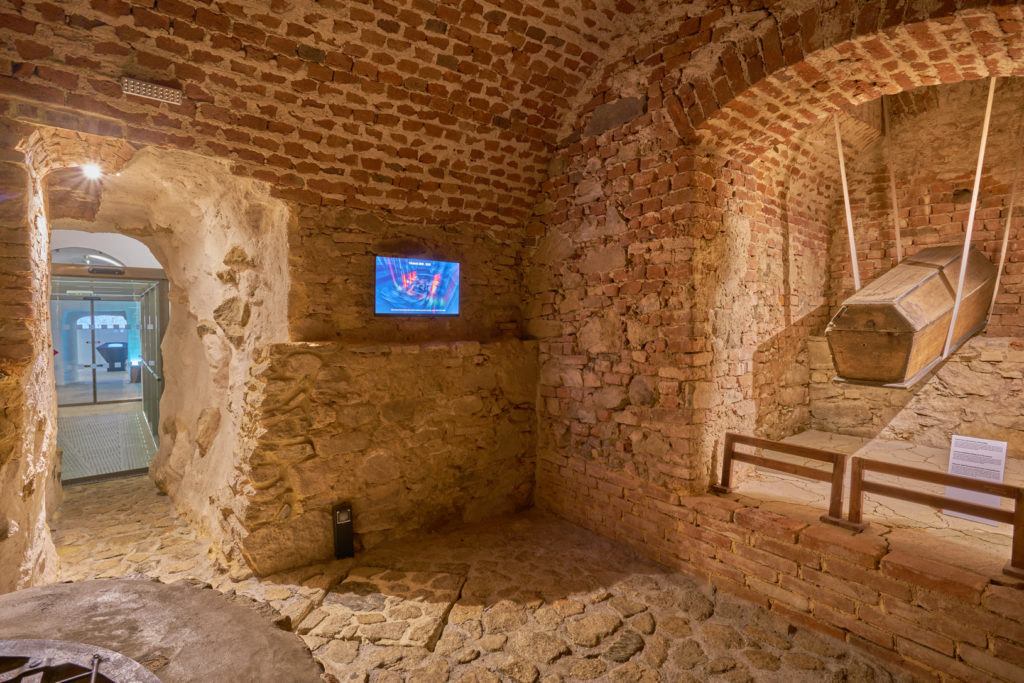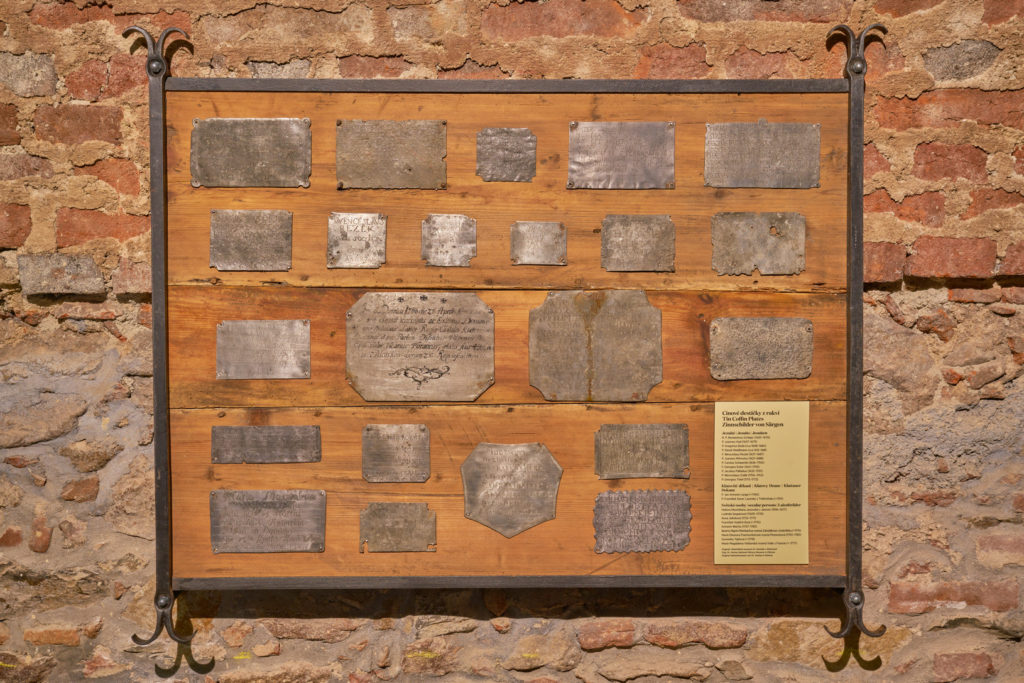History of the Crypt
The crypts under the Klatovy Jesuit church, which is dedicated to the Immaculate Conception of the Virgin Mary and St. Ignatius, were built as part of the church’s construction in the years 1656-1676. According to the builders’ plans, it became a burial place for members of the Jesuit order and its benefactors from the ranks of the surrounding nobility and burghers. Between 1676 and 1783, more than 200 people were laid to rest here. In 1784, Emperor Joseph II forbade burials in crypts for hygienic reasons. Even his brother, Father Vojtech Chanovsky of Dlouha Ves, a missionary active in the 17th century in southwestern Bohemia, who initiated the invitation of the Jesuits to Klatovy, was buried here.
The church was built according to the typology of the Jesuit Church of Gesù in Rome. The crypts have a sophisticated ventilation system. Cold air is drawn in from outside through ventilation holes in the walls and vertical chimneys carry warm air all the way under the church’s roof. All of the chimneys are connected by horizontal vents. The bodies of the deceased were placed in oak coffins on a layer of shavings and lined with hops. Natural ventilation in the crypts led to the drying of the bodies.
At the end of the 19th century, however, some rooms began to be used for other purposes. The doors to the street were bulldozed through, and some passages were walled up; the crypts became warehouses. Since the 1920s, the Catacombs have become an important tourist attraction, and the influx of visitors has increased the temperature and humidity in the crypts. In the 1930s, some vertical chimneys were filled in - the natural ventilation of the crypts was disturbed and the humidity in the environment increased. As a result, a large number of the mummies fell apart. In 1937, 140 destroyed mummies were buried in the cemetery of St. Jacob’s in a common grave. The place of burial of the remains is commemorated by a memorial stone.
Jan Cervenak, a specialist in environmental engineering, started conducting preliminary investigations and measurements of the microclimate in the crypts in 1981. Auxiliary fans were installed and horizontal flow was restored. In 2011, the vertical chimneys were cleaned. The crypts were divided into two parts: a museum part with controlled ventilation and a reverent part with natural air circulation. A new entrance to the catacombs was created, fitted with door dividers between the museum and the reverent part. Other constructional changes in 2021 improved the situation by removing inappropriately created or, on the contrary, walled passages. The ventilation system is functional again.
Since the 1970s, the care of mummies has also improved. Professional conservators began to look after their condition. During the reconstruction of the exhibition in 2011, a team of conservators led by Jana Strakova carried out professional treatment of the mummies. The mummies were then placed in new coffins with glass lids. At present, conservators carry out 2-3 inspections a year and the professional treatment of bodies and coffins once every 5 years. Today, there are 39 mummies and skeletal remains in the Catacombs.


